Contents
- Learn About America’s Presidents at These Presidential National Parks
- U.S. Presidents and the National Parks: A Brief History
- 33 U.S. Presidential National Parks, Birthplaces, Homes, Monuments and Memorials
- George Washington Birthplace National Monument, Virginia
- Washington Monument, Washington, D.C.
- George Washington Memorial Parkway, Virginia
- Mount Rushmore National Memorial, South Dakota
- Adams National Historical Park, Massachusetts
- Gateway Arch National Park, Missouri
- Thomas Jefferson Memorial, Washington, D.C.
- Martin Van Buren National Historic Site, New York
- Abraham Lincoln Birthplace National Historical Park, Kentucky
- Lincoln Boyhood National Memorial, Indiana
- Lincoln Home National Historic Site, Illinois
- Ford’s Theatre National Historic Site, Washington, D.C.
- Lincoln Memorial, Washington, D.C.
- Andrew Johnson National Historic Site, Tennessee
- Ulysses S. Grant National Historic Site, Illinois
- General Grant National Memorial, New York
- James A. Garfield National Historic Site, Ohio
- Theodore Roosevelt Birthplace National Historic Site, New York
- Theodore Roosevelt Inaugural National Historic Site, New York
- Sagamore Hill National Historic Site, New York
- Theodore Roosevelt Island, Washington, D.C.
- Theodore Roosevelt National Park, North Dakota
- William Howard Taft National Historic Site, Ohio
- Herbert Hoover National Historic Site, Iowa
- Home of Franklin D. Roosevelt National Historic Site, New York
- Eleanor Roosevelt National Historic Site, New York
- Harry S Truman National Historic Site, Missouri
- Eisenhower National Historic Site, Pennsylvania
- John Fitzgerald Kennedy National Historic Site, Massachusetts
- Lyndon B. Johnson National Historical Park, Texas
- Jimmy Carter National Historical Park, Georgia
- President William Jefferson Clinton Birthplace Home National Historic Site, Arkansas
- President’s Park (The White House), Washington, D.C.
Learn About America’s Presidents at These Presidential National Parks
As federally managed natural areas, cultural sites and historical landmarks, America’s national parks are inextricably connected with the country’s presidential history.
After all, it were America’s presidents who first created these protected parks, as early as 1864 when Abraham Lincoln approved California’s Yosemite State Park. There’s always been a strong link between the U.S. presidents and the national parks.
Before we talk about the many national park sites related to presidents, let’s take a brief look at the link between U.S. presidents and the national parks.
U.S. Presidents and the National Parks: A Brief History
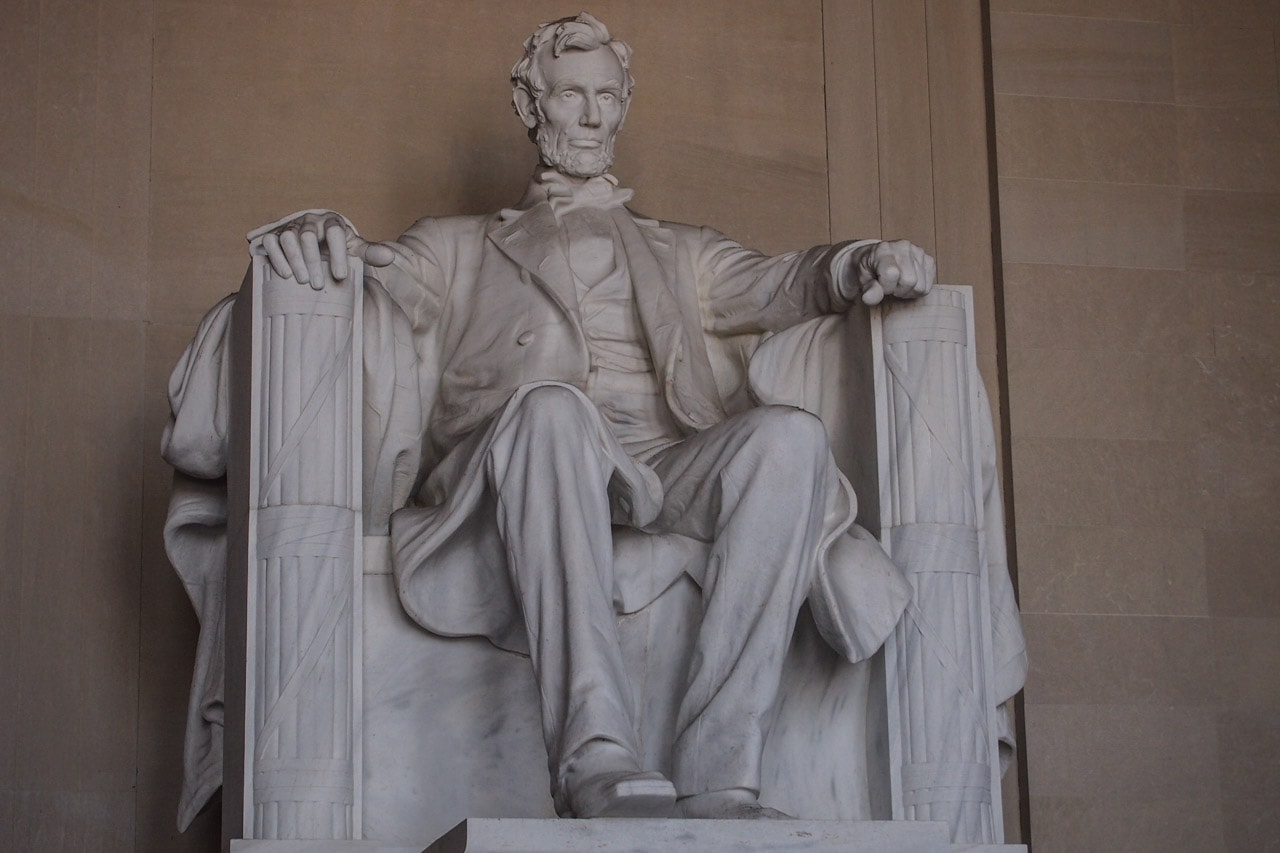
This post about U.S. presidential national parks contains affiliate links. You can read more about our Terms of Use / Disclosure here.
The World’s First National Park
Not even a decade after Lincoln’s Yosemite State Park approval, President Ulysses S. Grant signed off on the creation of Yellowstone National Park in 1872, effectively establishing the first national park in the world.
The Antiquities Act
It wasn’t until the tenure of President Theodore Roosevelt, however, that the American national park and conservation movement fully gained steam.
He signed the monumental Antiquities Act in 1906, almost immediately using it to singlehandedly create eighteen national monuments by presidential proclamation.
Now often called the “conservationist president”, Roosevelt established no fewer than 150 national forests, more than 50 bird preserves and 4 wildlife preserves.
Nowadays, he’s one of the presidents with the most National Park Service sites named after him, including the only national park named after a president—Theodore Roosevelt National Park in North Dakota.
“We have fallen heirs to the most glorious heritage a people ever received, and each one must do his part if we wish to show that the nation is worthy of its good fortune.”
Theodore Roosevelt
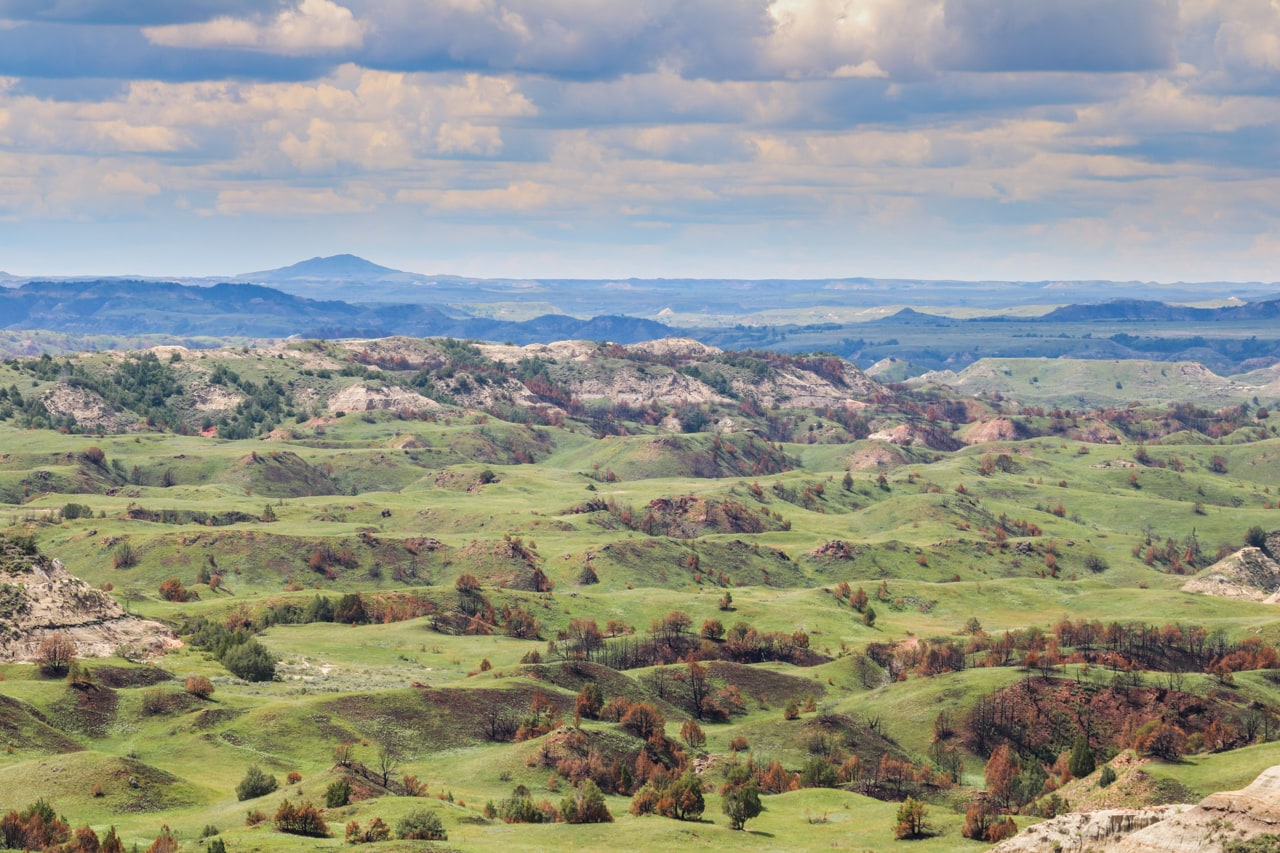
The National Park Service
The whirlwind of national park and monument designations didn’t stop after Theodore Roosevelt, though. Subsequent presidents followed his example, notably President Woodrow Wilson who officially created the National Park Service (NPS) on August 25, 1916.
The Expansion of the National Park Service & the Civilian Conservation Corps
Another major milestone came during the presidency of President Franklin D. Roosevelt, a distant cousin of Theodore’s.
Together with Horace Albright, the then-director of the National Park Service, he transferred all federally managed monuments and memorials to the NPS in 1933.
This added numerous sites to the National Park Service system, from Civil War battlefields (previously managed by the War Department) to many of the East Coast’s historical parks and the entire park system of Washington, D.C.
Additionally, Franklin D. Roosevelt also created the Civilian Conservation Corps (CCC), which went on to create thousands of miles of trails, lodges, campgrounds, roads (such as Shenandoah’s Skyline Drive) and other national park facilities all over the United States.
This is still the largest park improvement program ever implemented by a U.S. president.
The Continued Creation of National Parks by U.S. Presidents
There’s even a president who worked as a mounted park ranger years before he became president. President Gerald R. Ford worked in Yellowstone National Park in 1936, so far the only U.S. president to actually have worked in a national park.
Even though, since those early conservation presidents, there’s been no lack of conservation challenges, downright obstruction and resistance to federal parks throughout the decades, the administrations of many U.S. presidents continued creating national parks.
The list includes Dwight D. Eisenhower, Lyndon B. Johnson, Jimmy Carter, Richard Nixon, Bill Clinton, George W. Bush, Barack Obama and others.
You can read a comprehensive overview of the relationship between the U.S. presidents and the national parks here on the website of The White House Historical Association.
33 U.S. Presidential National Parks, Birthplaces, Homes, Monuments and Memorials
Nowadays, the National Park Service system has more than 30 units that are dedicated to one or more U.S. presidents.
From former president’s homes to monuments, memorials, parkways and even a couple of proper national parks, you can learn more about the accomplishments, life and legacy of numerous American presidents at these presidential national parks.
I have listed them by president, in an ascending order. Starting with America’s first president, George Washington, this overview of presidential national parks ends with the latest president that has a designated National Park Service site. Currently, this is Bill Clinton, the 42nd president.
George Washington Birthplace National Monument, Virginia
- George Washington – 1st U.S. President, 1789-1797
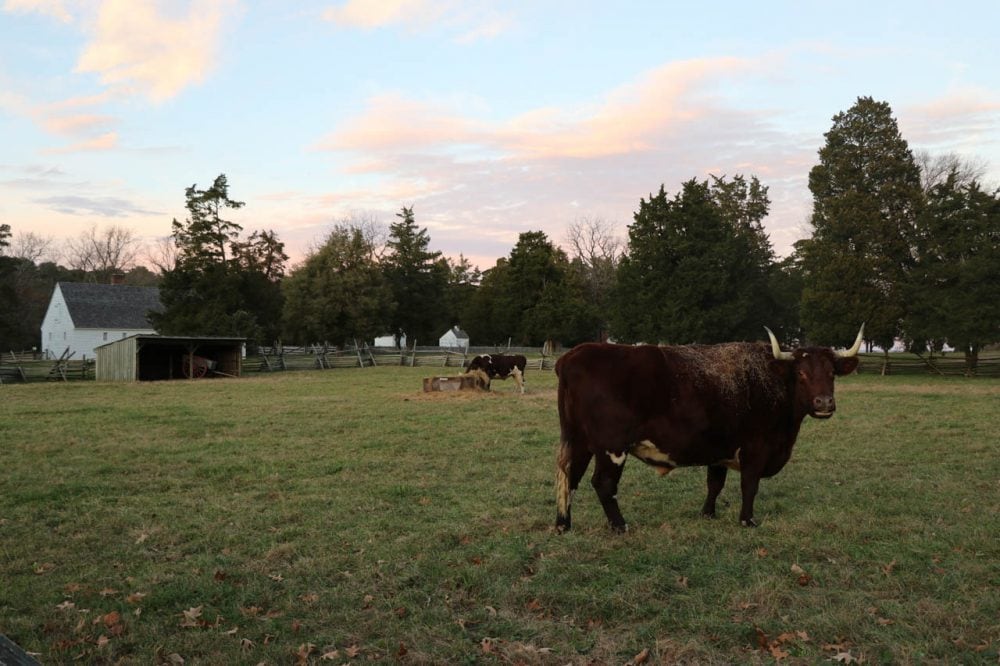
The birthplace of George Washington, America’s first president, is wonderfully preserved at its plantation in northern Virginia. The national monument also includes the Washington Family Burial Ground.
Established to honor Washington’s 200th birthday, the George Washington Birthplace National Monument offers insights into the Washingtons’ relationships with Native Americans, their enslaved workers and other Euro-Americans.
More information: https://www.nps.gov/gewa/index.htm
Washington Monument, Washington, D.C.
- George Washington – 1st U.S. President, 1789-1797
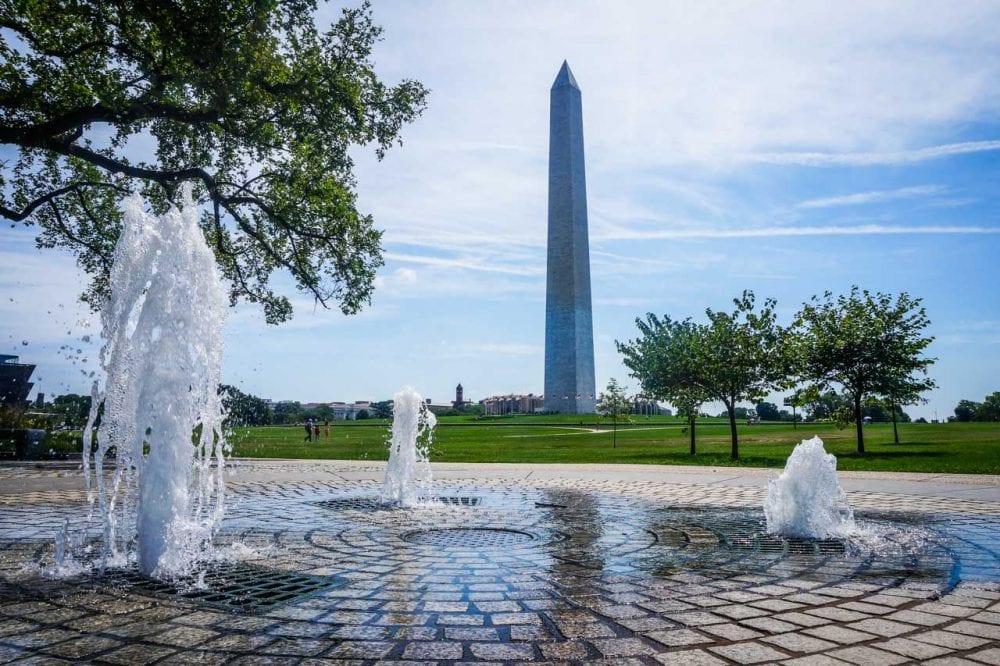
The world’s tallest obelisk, the 555-feet-high Washington Monument dominates the National Mall in Washington, D.C. It was built to commemorate and honor George Washington, the Continental Army’s commander-in-chief during the American Revolution and, later, the first U.S. president.
A spiral staircase leads all the way to the top, offering breathtaking views, while a circle of 50 American flags surrounds it.
More information: https://www.nps.gov/wamo/index.htm
George Washington Memorial Parkway, Virginia
- George Washington – 1st U.S. President, 1789-1797
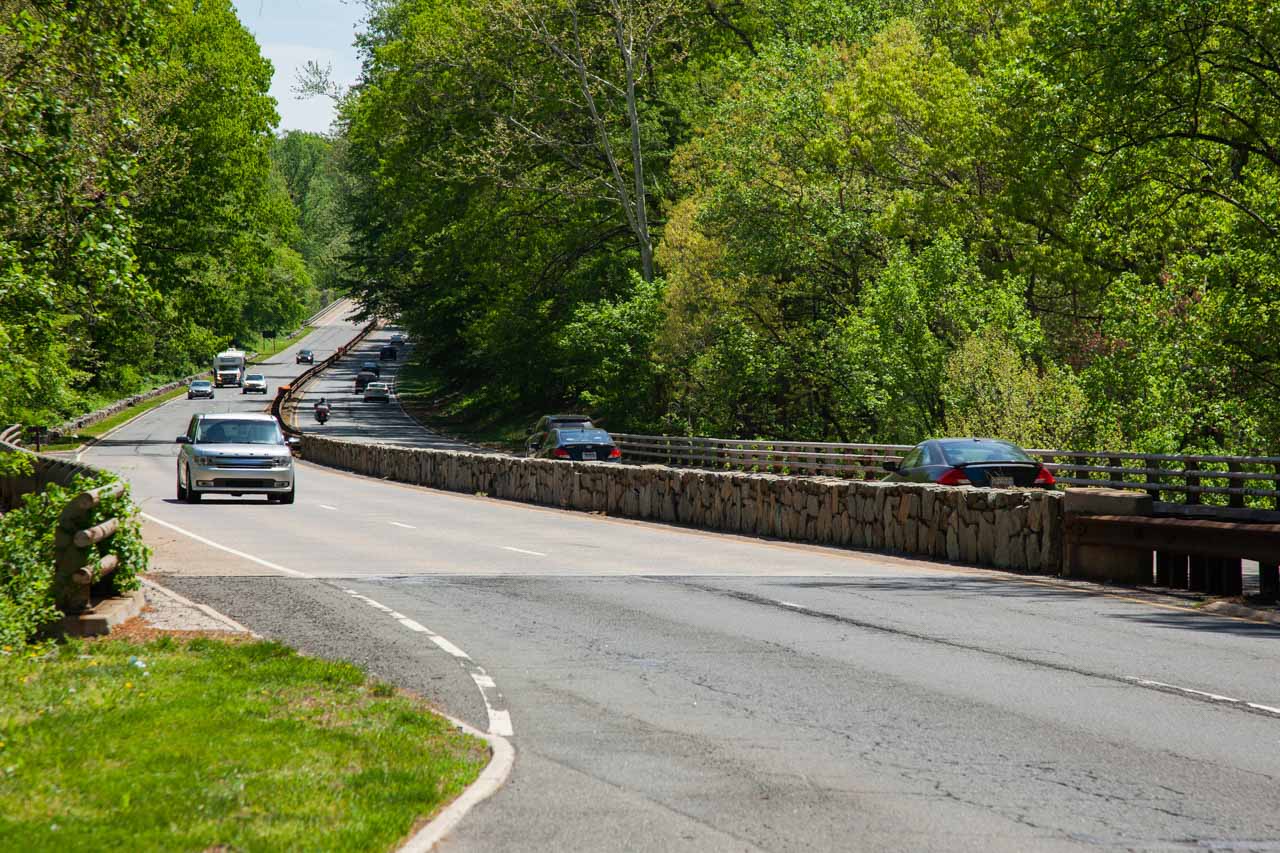
An All American Road, the George Washington Memorial Parkway runs for 25 miles from Mount Vernon (George Washington’s plantation home) to McLean (the location of beautiful Great Falls Park).
On the way, it passes the cities of Alexandria and Arlington, both home to several important historic sites.
Following the south bank of the Potomac River, the parkway also protects wildlife habitat near Washington, D.C., such as the Dyke Marsh Wildlife Preserve.
More information: https://www.nps.gov/gwmp/index.htm
Mount Rushmore National Memorial, South Dakota
- George Washington – 1st U.S. President, 1789-1797
- Thomas Jefferson – 3rd U.S. President, 1801-1809
- Abraham Lincoln – 16th U.S. President, 1861-1865
- Theodore Roosevelt – 26th U.S. President, 1901-1909
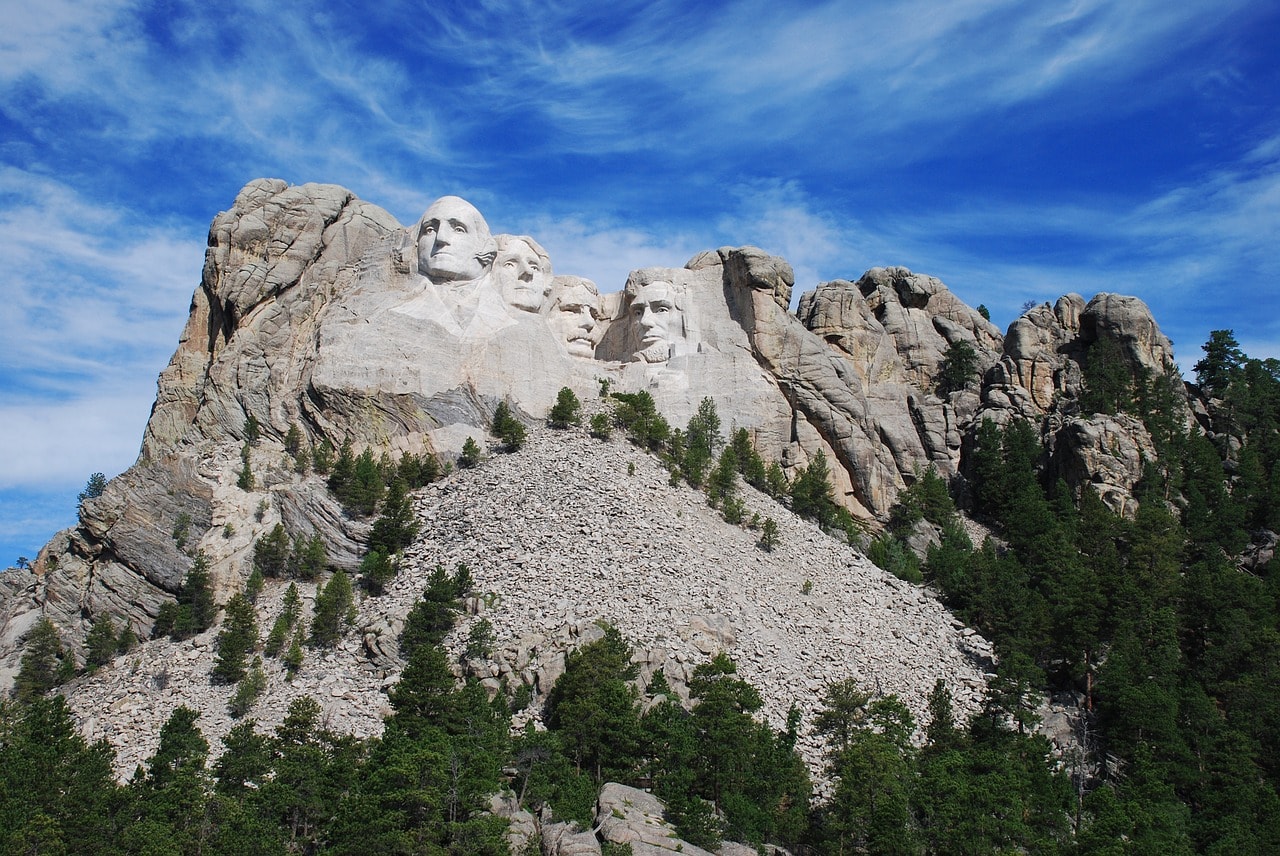
One of the most famous landmarks in the USA, Mount Rushmore National Memorial honors four of the greatest presidents in U.S. history.
Located in South Dakota’s Black Hills, this massive sculpture consists of the heads of Presidents George Washington, Thomas Jefferson, Theodore Roosevelt and Abraham Lincoln.
Those four presidents represent four distinct periods in the nation’s history, respectively its birth, growth, development and preservation. It is one of the greatest presidential national parks in America.
More information: https://www.nps.gov/moru/index.htm
Adams National Historical Park, Massachusetts
- John Adams – 2nd U.S. President, 1797-1801
- John Quincy Adams – 6th U.S. President, 1825-1829
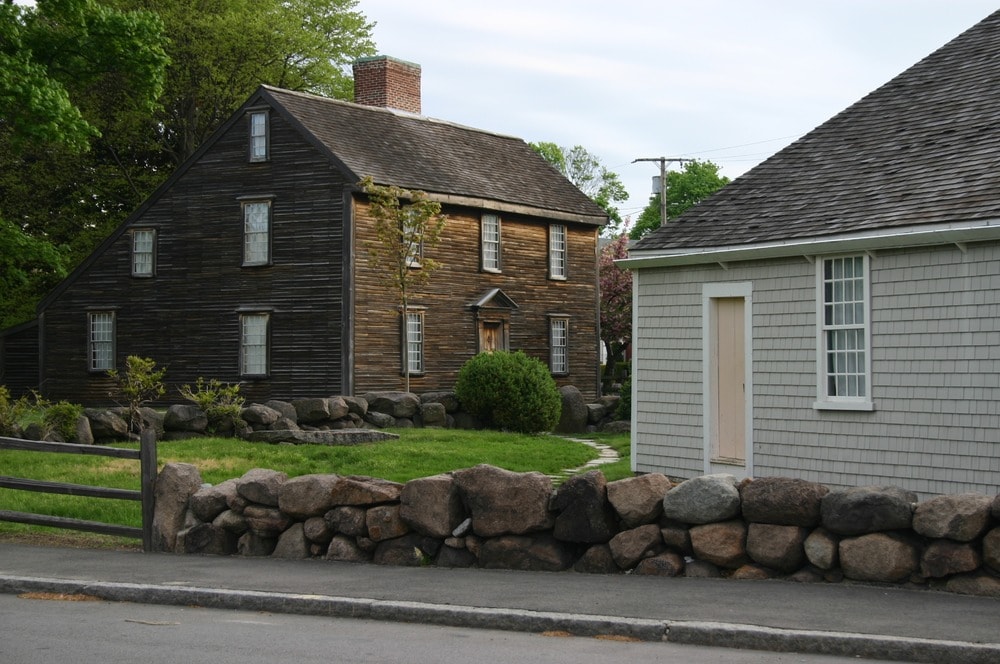
Located in Quincy, Massachusetts, the Adams National Historical Park preserves the homes of two former U.S. presidents—John Adams and his son John Quincy Adams.
The park tells the story of no fewer than five generations of the Adams family, including the two presidents and first ladies, but also writers, historians and other members of the family.
There are eleven historic buildings in Adams National Historical Park, notably the Peace Field country estate, the John Adams Birthplace, the John Quincy Adams Birthplace and the Stone Library.
More information: https://www.nps.gov/adam/index.htm
Gateway Arch National Park, Missouri
- Thomas Jefferson – 3rd U.S. President, 1801-1809
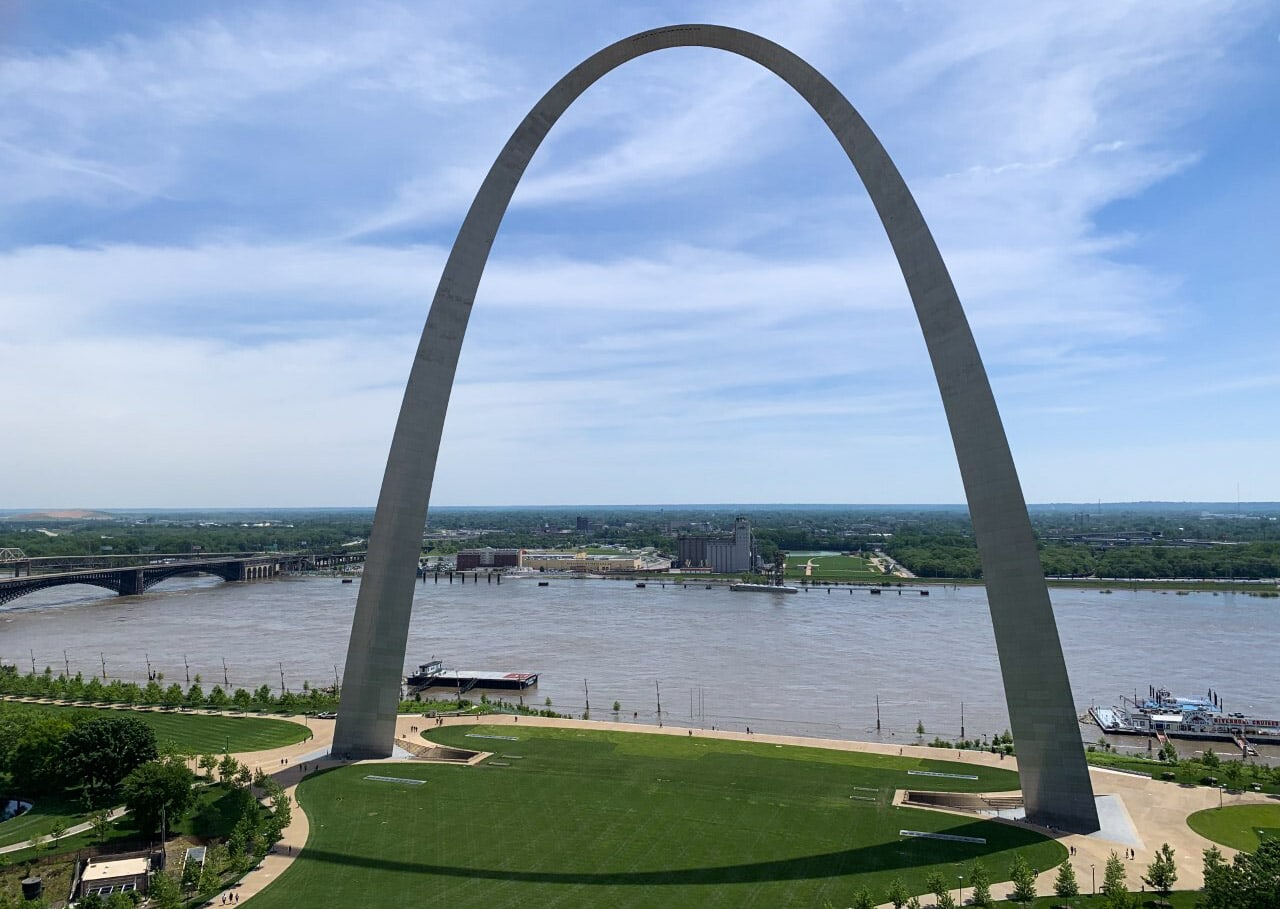
Commemorating the starting point of the Lewis and Clark Expedition in the early-19th century, Gateway Arch National Park reflects the role St. Louis played in the Westward Expansion of the USA.
Before it was redesignated as a national park in 2018, the arch was known as the Jefferson National Expansion Memorial. Its height of 630 feet makes Gateway Arch the world’s tallest arch and largest man-made monument in the Western Hemisphere.
In addition to Jefferson’s Louisiana Purchase and America’s subsequent Westward Expansion, this urban national park also commemorates the first civil government west of the Mississippi and the Dred Scott case at the Old Courthouse, which raised the debate about slavery.
More information: https://www.nps.gov/jeff/index.htm
Thomas Jefferson Memorial, Washington, D.C.
- Thomas Jefferson – 3rd U.S. President, 1801-1809
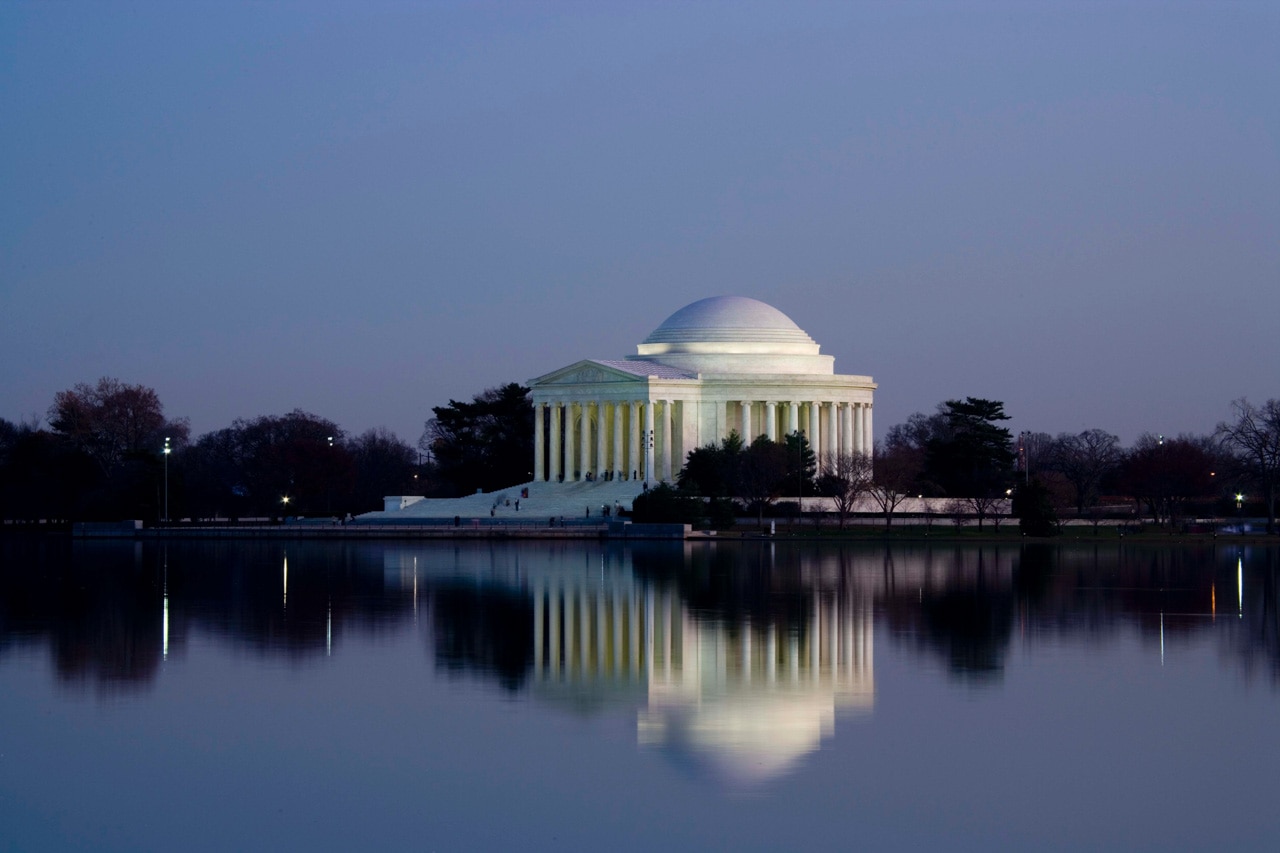
Sponsored by Franklin D. Roosevelt and constructed between 1939 and 1943, the Thomas Jefferson Memorial is one of the most beautiful buildings on the National Mall.
Built in neoclassical style, with references to Jefferson’s own design of the University of Virginia’s rotunda, it is on the shore of the Potomac River. The memorial commemorates the life and accomplishments of Thomas Jefferson, one of the Founding Fathers and the author of the Declaration of Independence.
More information: https://www.nps.gov/thje/index.htm
Martin Van Buren National Historic Site, New York
- Martin Van Buren – 8th U.S. President, 1837-1841
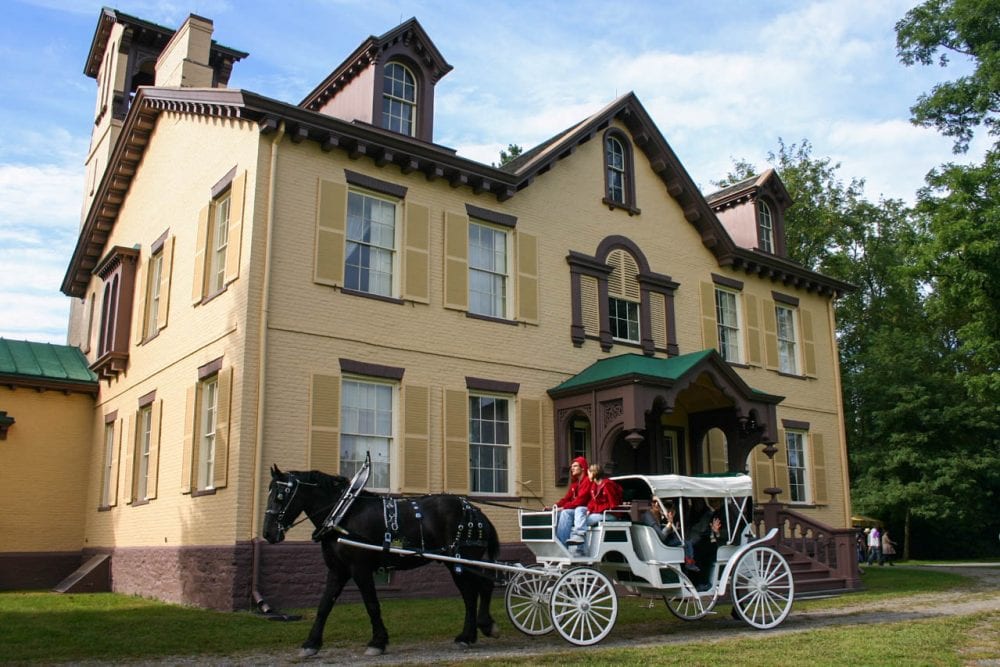
One of the founders of the Democratic party and a promotor of the two-party system, Martin Van Buren may be an obscure president today, but he was a key figure in many of his day’s issues, including the debate about slavery.
He served as governor of New York, U.S. Secretary of State and vice president before being elected as the eight U.S. president.
During his presidency, he bought the Lindenwald mansion just south of Kinderhook, New York, which became his home for more than 20 years after he left office. The estate is now preserved as the Martin Van Buren National Historic Site.
More information: https://www.nps.gov/mava/index.htm
Abraham Lincoln Birthplace National Historical Park, Kentucky
- Abraham Lincoln – 16th U.S. President, 1861-1865
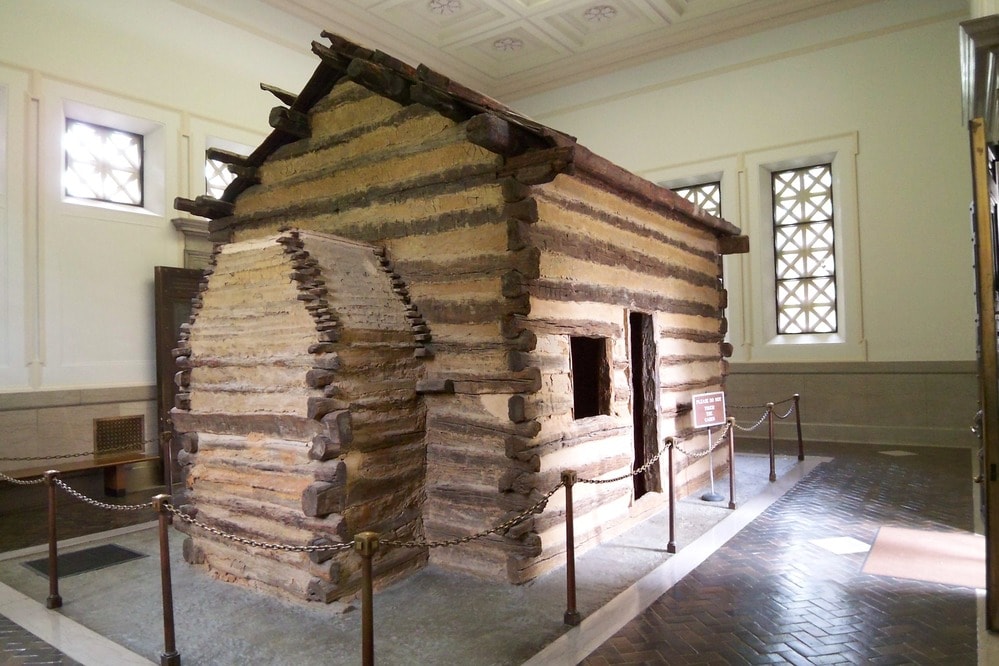
The Abraham Lincoln Birthplace National Historical Park preserves the place where America’s 16th president was born and spent his early childhood.
Located in central Kentucky, which was near the frontier at the time, the park consists of two units—the Abraham Lincoln Birthplace Unit and the Abraham Lincoln Boyhood Unit. You can explore the sites and area that shaped young Abraham to become the man who led his country through the Civil War.
More information: https://www.nps.gov/abli/index.htm
Lincoln Boyhood National Memorial, Indiana
- Abraham Lincoln – 16th U.S. President, 1861-1865
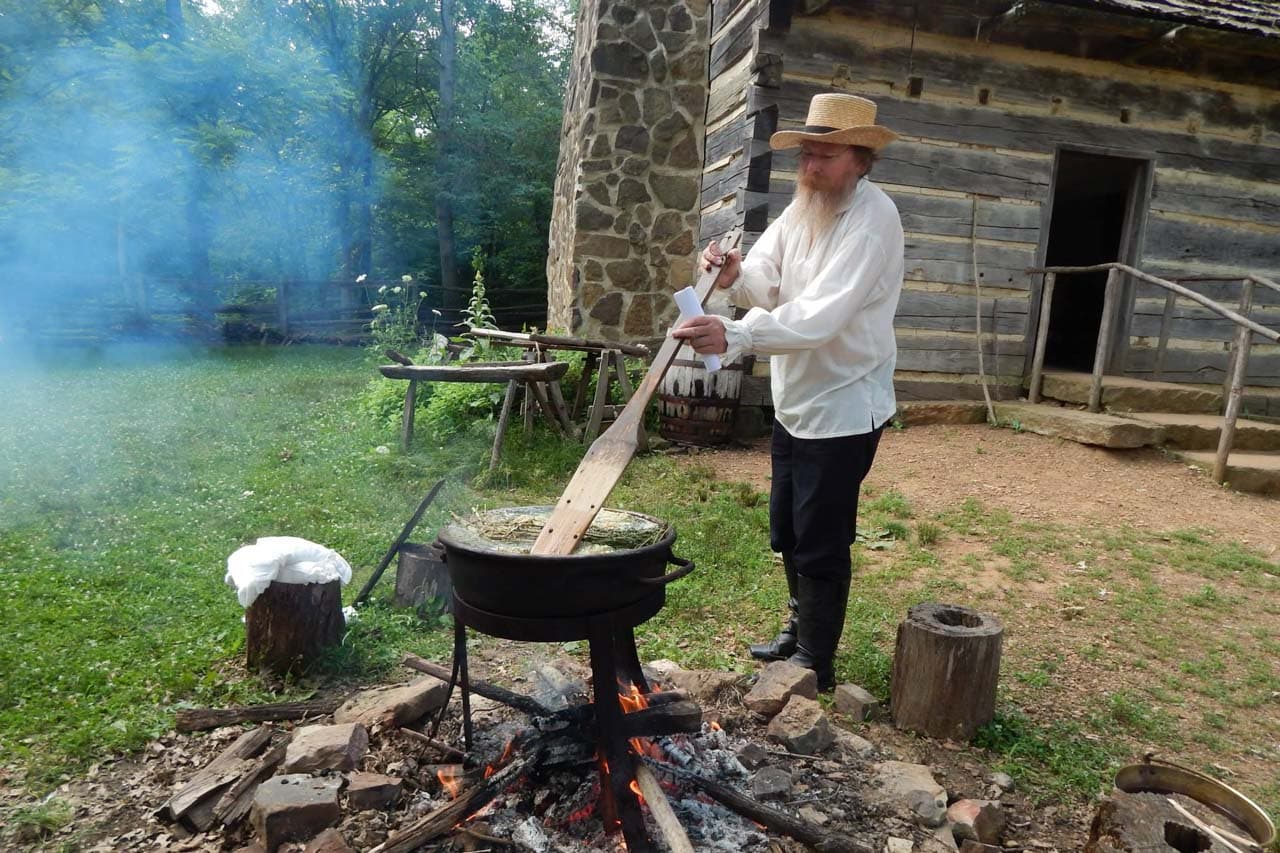
After spending his youngest years in Kentucky, Lincoln and his family moved to present-day Lincoln City, Indiana in 1816. The Lincoln Boyhood National Memorial preserves the place where Abraham grew up, from a 7-year-old boy to a 21-year-old man.
The centerpiece of this presidential national park site is the Memorial Building, a semi-circular monument that depicts the different phases in Lincoln’s life.
Other important sites include the original Cabin Site Memorial and the Lincoln Indiana Museum.
At the excellent Living Historical Farm, visitors can explore a replica of the Lincoln farm house and living history exhibits, complete with park rangers wearing period clothing.
More information: https://www.nps.gov/libo/index.htm
Lincoln Home National Historic Site, Illinois
- Abraham Lincoln – 16th U.S. President, 1861-1865
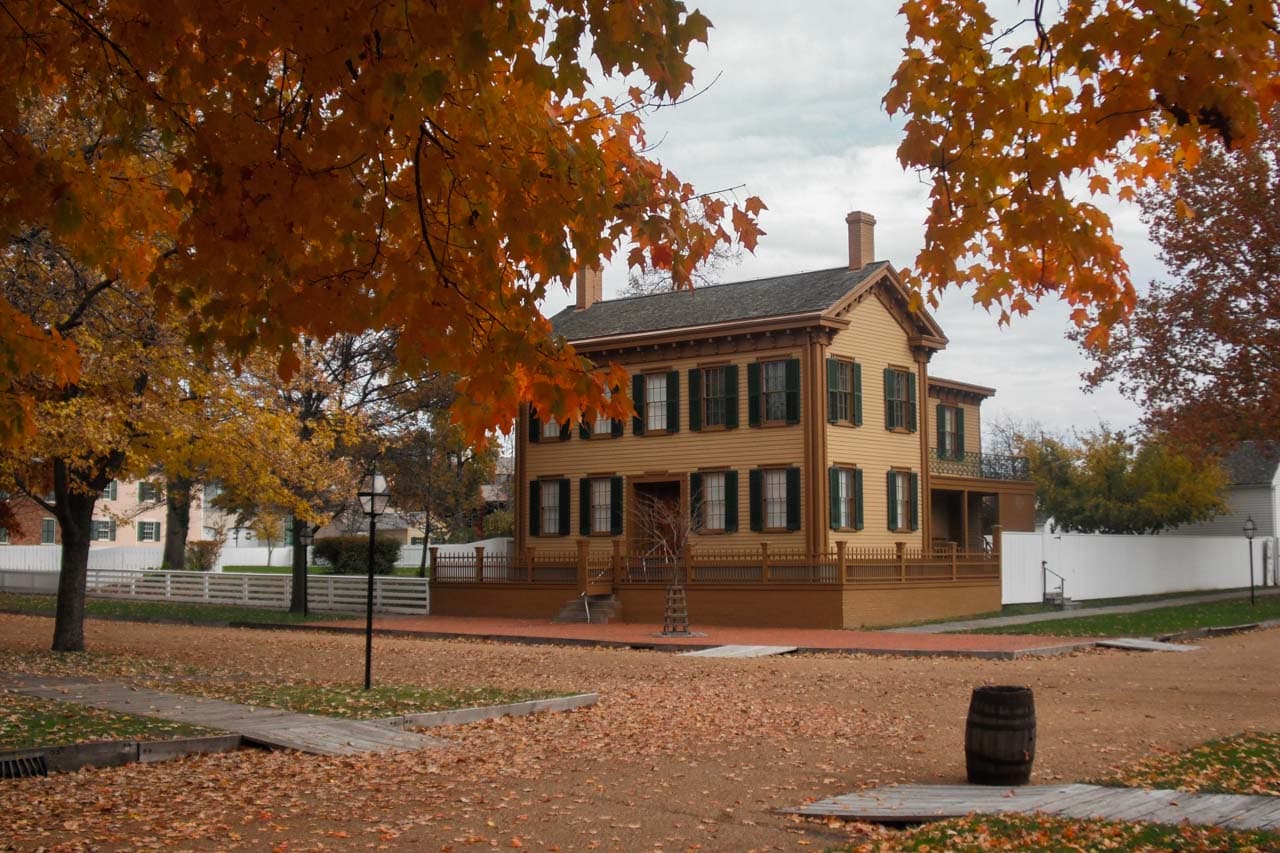
Located along Route 66 in St. Louis, Illinois, the Lincoln Home National Historic Site preserves the former home and neighborhood of Abraham Lincoln. This is where he lived from 1844 to 1861 before he became the 16th U.S. president.
The center of this amazing president park is the historic Lincoln home, which, incidentally, was the only house Lincoln ever owned. Additionally, the site encompasses the four blocks around the house, while a visitor center provides lots of fascinating background information.
Besides being one of the greatest presidents in U.S. history, Lincoln was, of course, also just another human being. He was a husband and a parent, a neighbor and a friend.
The Lincoln Home National Historic Site shows not just who Lincoln was as a U.S. president, but also what kind of man he was in his everyday life.
More information: https://www.nps.gov/liho/index.htm
Ford’s Theatre National Historic Site, Washington, D.C.
- Abraham Lincoln – 16th U.S. President, 1861-1865
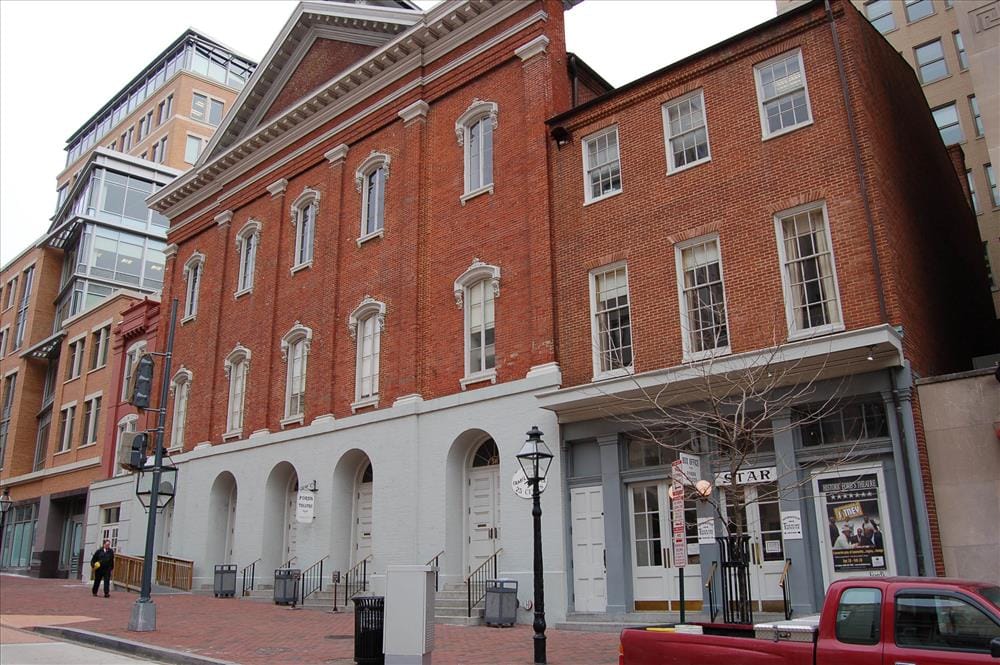
On April 14, 1865, President Abraham Lincoln was assassinated by stage actor John Wilkes Booth at Ford’s Theatre in Washington, D.C. The Ford’s Theatre National Historic Site is made up of two buildings.
Co-managed by the NPS and the Ford’s Theatre Society, Ford’s Theatre itself is home to the Ford’s Museum, which houses many artifacts related to Lincoln’s assassination.
Notable items include the very Derringer pistol used for the shooting, the original door to the theater box where Lincoln sat and Booth’s personal diary.
The national historic site’s second building is the Peterson House across the street, where Lincoln died from his wounds the next morning.
More information: https://www.nps.gov/foth/index.htm
Lincoln Memorial, Washington, D.C.
- Abraham Lincoln – 16th U.S. President, 1861-1865
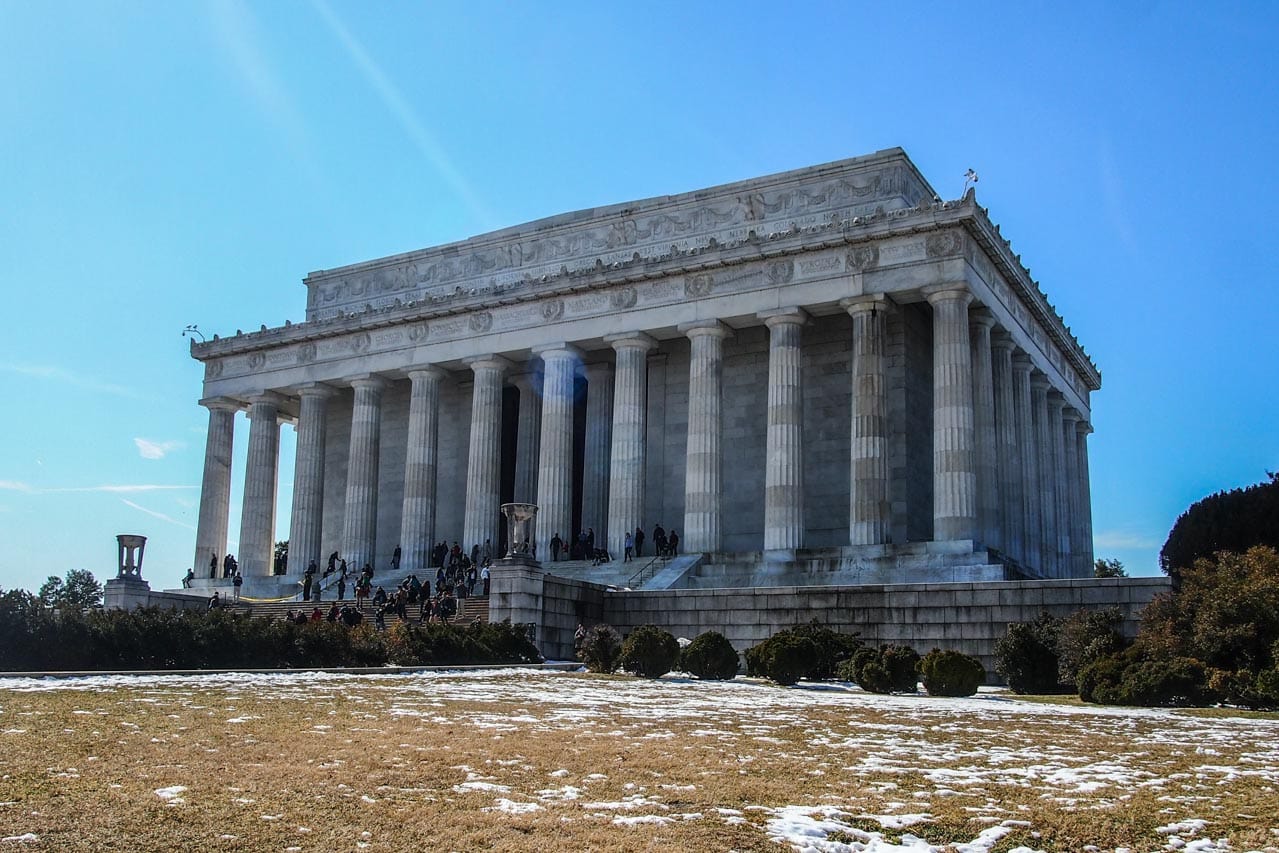
One of the main monuments in Washington, D.C., the Lincoln Memorial sits at the western end of the National Mall. Resembling a neoclassical temple, the memorial immortalizes Abraham Lincoln as a symbol of strength, unity and wisdom.
One of the most iconic presidential national parks, the memorial’s centerpiece is a massive statue of Abraham Lincoln. It also includes inscriptions of his two most famous speeches—the Gettysburg Address and Lincoln’s second inaugural address.
Additionally, the Lincoln Memorial has continued to serve as the location for many other historic speeches, most famously Martin Luther King, Jr.’s “I Have a Dream” speech in 1963.
More information: https://www.nps.gov/linc/index.htm
“In this temple, as in the hearts of the people for whom he saved the Union, the memory of Abraham Lincoln is enshrined forever.”
Lincoln Memorial Quote
Andrew Johnson National Historic Site, Tennessee
- Andrew Johnson – 17th U.S. President, 1865-1869
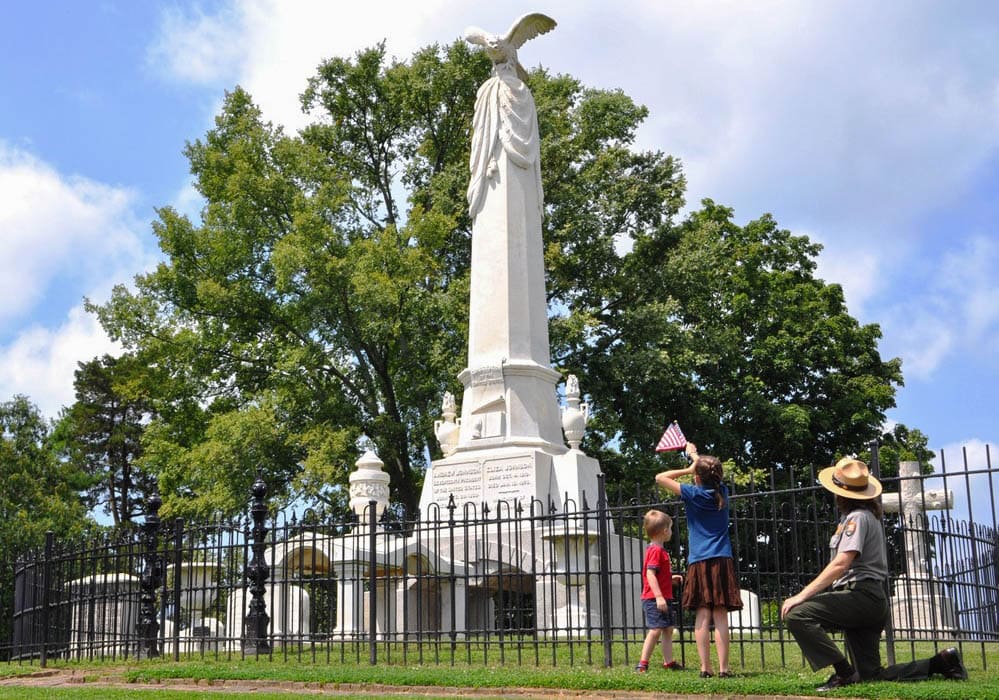
After Lincoln’s assassination, Andrew Johnson became the president of the United States. Andrew Johnson National Historic Site preserves three different sites related to Johnson’s life.
The Andrew Johnson Visitor Center complex consists of the park’s visitor center and the Memorial Building, which houses Johnson’s original 1830s tailor shop and the presidential museum.
The Andrew Johnson Homestead, on the other hand, is the house where Johnson and his wife lived before and after his presidency. This presidential park’s third unit is the Andrew Johnson National Cemetery, the final resting place of America’s 17th president.
More information: https://www.nps.gov/anjo/index.htm
Ulysses S. Grant National Historic Site, Illinois
- Ulysses S. Grant – 18th U.S. President, 1869-1877
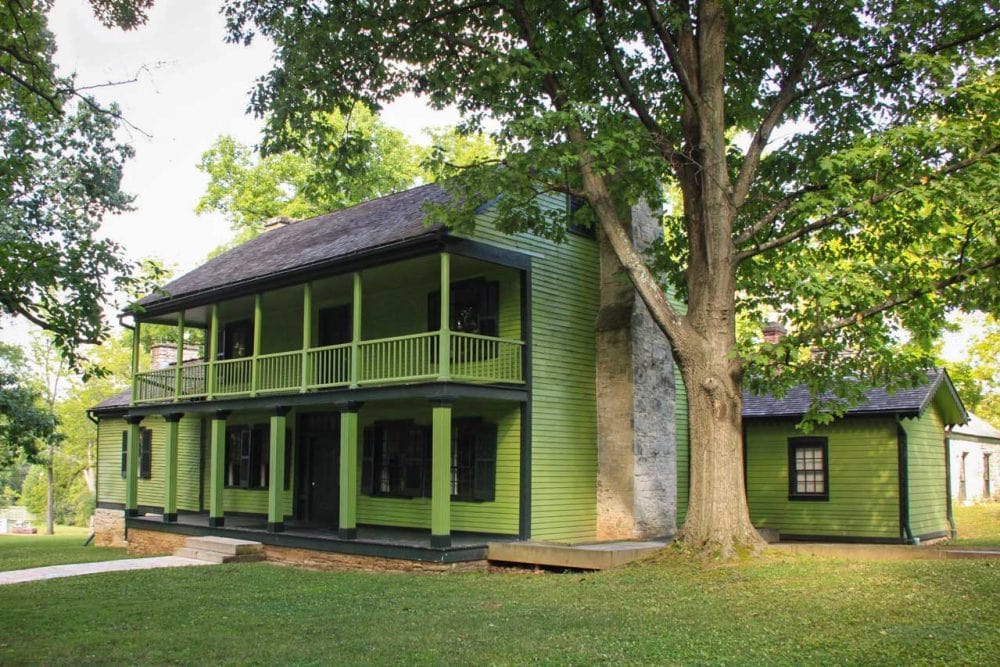
The renowned general who won the Civil War for the Union, Ulysses S. Grant met his future wife, Julia Dent, at her family home just southwest of St. Louis.
Now located in Grantwood Village in St. Louis, White Haven, as the family home is known, commemorates the military career, life and presidency of Ulysses S. Grant.
Several historic buildings at Ulysses S. Grant National Historic Site have survived. This includes White Haven itself, but also the summer kitchen, ice house, chicken coop and Grant’s 1872 horse stable, which now houses a museum.
Note: When Grant married his wife in 1848, White Haven was a plantation with an enslaved African-American workforce. Slaves worked the plantation until the end of the Civil War, which was won by Grant. This clearly illustrates the complicated situation in the mid-19th-century United States.
More information: https://www.nps.gov/ulsg/index.htm
General Grant National Memorial, New York
- Ulysses S. Grant – 18th U.S. President, 1869-1877
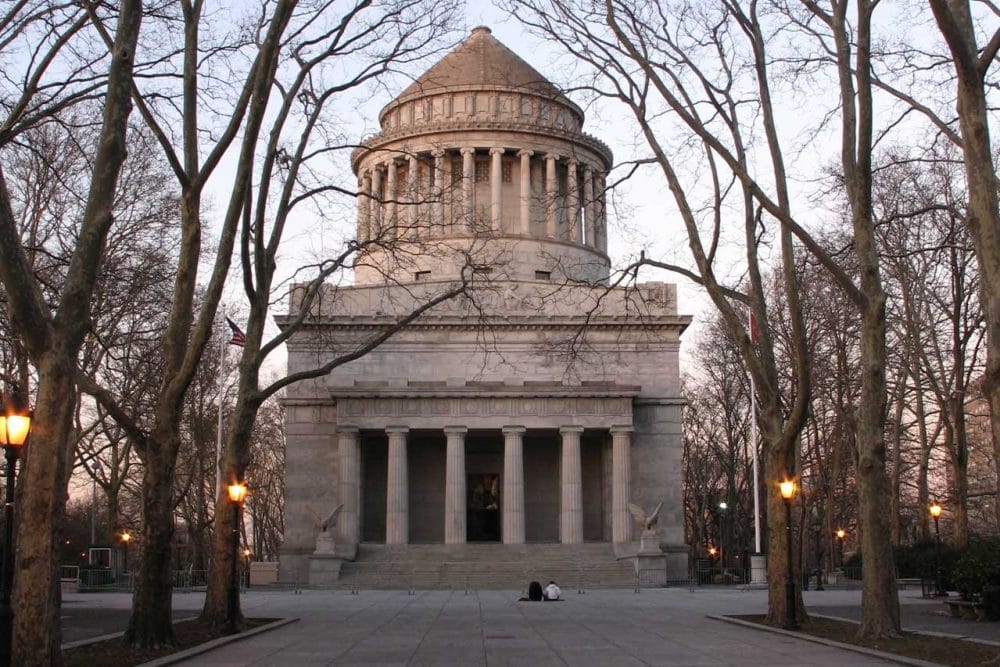
Also known as Grant’s Tomb, the General Grant National Memorial stands in a park in Morningside Heights in Upper Manhattan, New York City. The final resting place of President Ulysses S. Grant and his wife Julia, it is the largest mausoleum in North America.
Open to the public from Wednesday through Sunday, this imposing national memorial commemorates the Commanding General of the Union Army, the man who ended the bloodiest war in American history and later became the nation’s 18th president.
Notable accomplishments of Grant’s presidency include the creation of the world’s first national park, Yellowstone, and the signing of the 15th amendment, which gave African-American men the right to vote.
More information: https://www.nps.gov/gegr/index.htm
James A. Garfield National Historic Site, Ohio
- James A. Garfield – 20th U.S. President, 1881
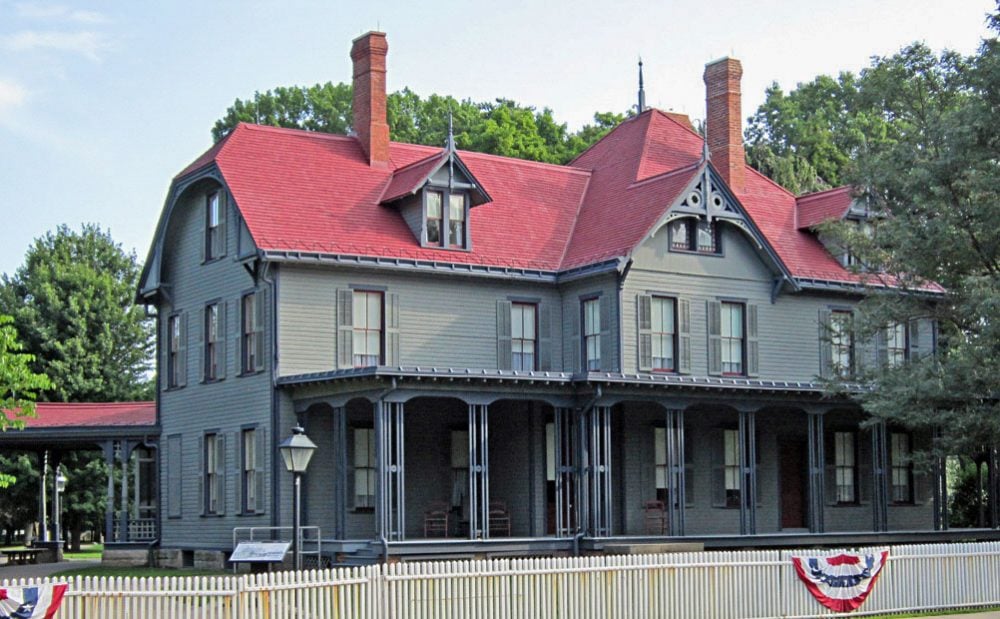
Preserving the Lawnfield estate and the surrounding properties of James A. Garfield, the James A. Garfield National Historic Site also encompasses the oldest presidential library in the USA.
During the 1880 presidential election, Garfield campaigned from the front porch of (t)his home, which reporters quickly started calling “Lawnfield.”
Only four months into his presidency, Garfield was shot—he died from his wounds a couple of months later. After his death, his widow added the Memorial Library to the home, effectively creating America’s first presidential library.
More information: https://www.nps.gov/jaga/index.htm
Theodore Roosevelt Birthplace National Historic Site, New York
- Theodore Roosevelt – 26th U.S. President, 1901-1909
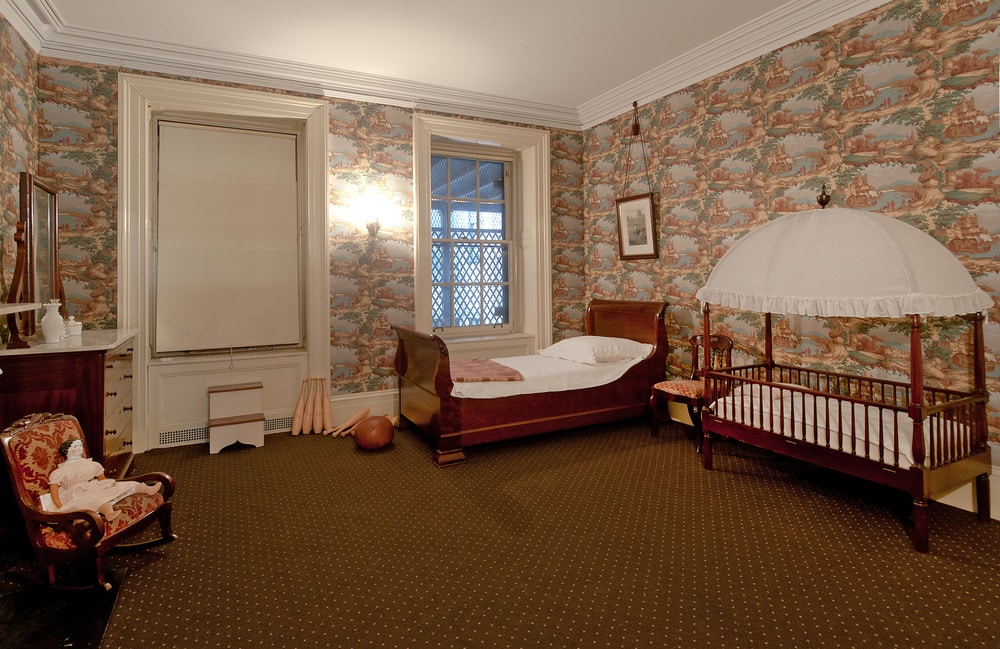
“Teddy” Roosevelt was born in a townhouse at 28 E. 20th Street in Manhattan’s Flatiron District in 1858. He spent most of his childhood here.
The Theodore Roosevelt Birthplace National Historic Site is a replica of the actual house, which was demolished in 1916 to create retail space.
After Roosevelt’s death in 1919, the Women’s Roosevelt Memorial Association purchased the site and rebuilt the house. The restoration resembles the Roosevelt home as it was 1865.
This is a great place to learn about the life, contributions and legacy of Theodore Roosevelt, the “conservationist president.”
More information: https://www.nps.gov/thrb/index.htm
Theodore Roosevelt Inaugural National Historic Site, New York
- Theodore Roosevelt – 26th U.S. President, 1901-1909
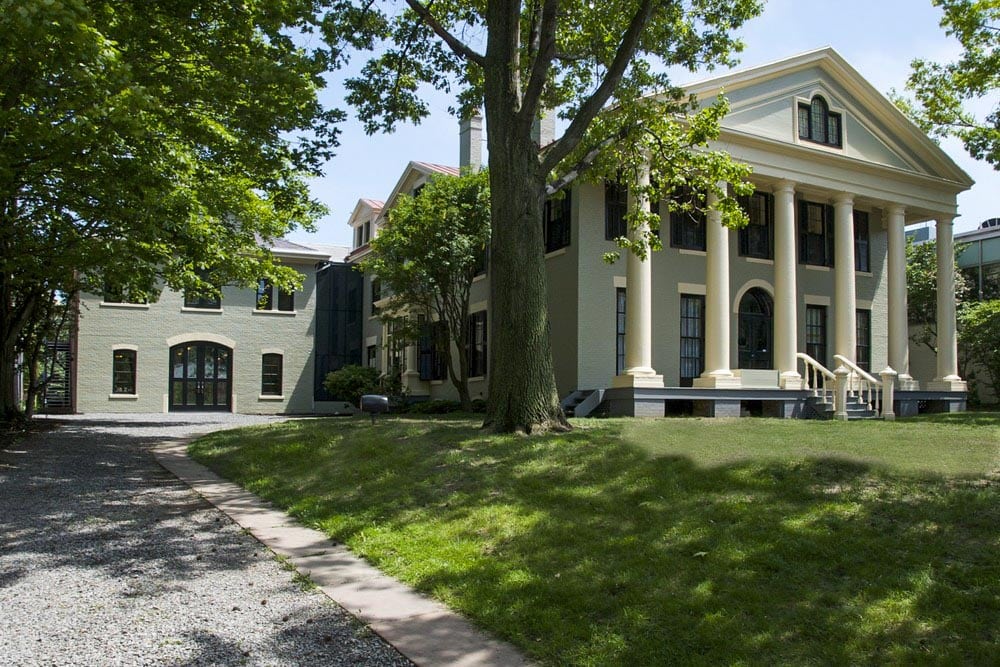
One of the most important presidencies in U.S. history almost didn’t even happen!
The Theodore Roosevelt Inaugural National Historic Site in Buffalo, New York preserves the Ansley Wilcox House where Roosevelt took the oath and was sworn in as the 26th president in 1901. This short, improvised and emotional inauguration happened after the assassination of William McKinley.
Although Roosevelt could easily never have been a president in the first place, he did end up rising to the occasion. He became one of the greatest presidents the United States has ever known—no fewer than four NPS sites are dedicated to him.
You can learn all about Roosevelt’s unexpected first inauguration at the Theodore Roosevelt Inaugural National Historic Site.
More information: https://www.nps.gov/thri/index.htm
Sagamore Hill National Historic Site, New York
- Theodore Roosevelt – 26th U.S. President, 1901-1909
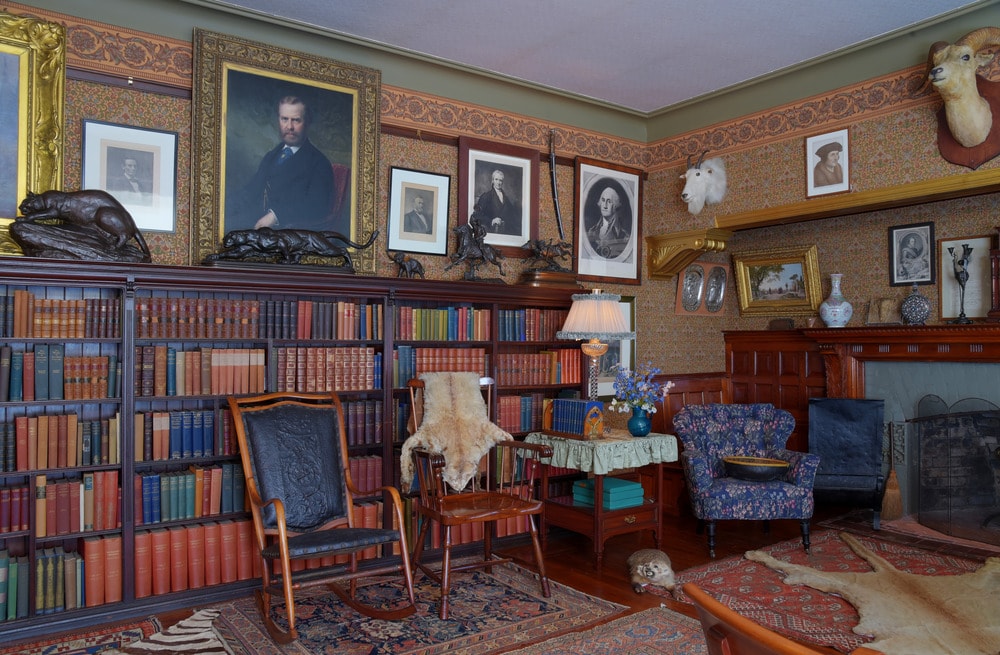
Located near Oyster Bay on Long Island’s north shore, Sagamore Hill was the home of Theodore Roosevelt from 1885 until his death in 1919.
After having spent many a childhood summer in the area, Roosevelt purchased a plot of land here in 1880, when he was 22. Over the years, he built a large house and farmlands.
During Roosevelt’s presidency, Sagamore Hill served as the “Summer White House”. Now one of dozens of presidential national parks, the Sagamore Hill National Historic Site preserves 83 acres of historic buildings, natural surroundings and the legacy of one of the most popular presidents in U.S. history.
More information: https://www.nps.gov/sahi/index.htm
Theodore Roosevelt Island, Washington, D.C.
- Theodore Roosevelt – 26th U.S. President, 1901-1909
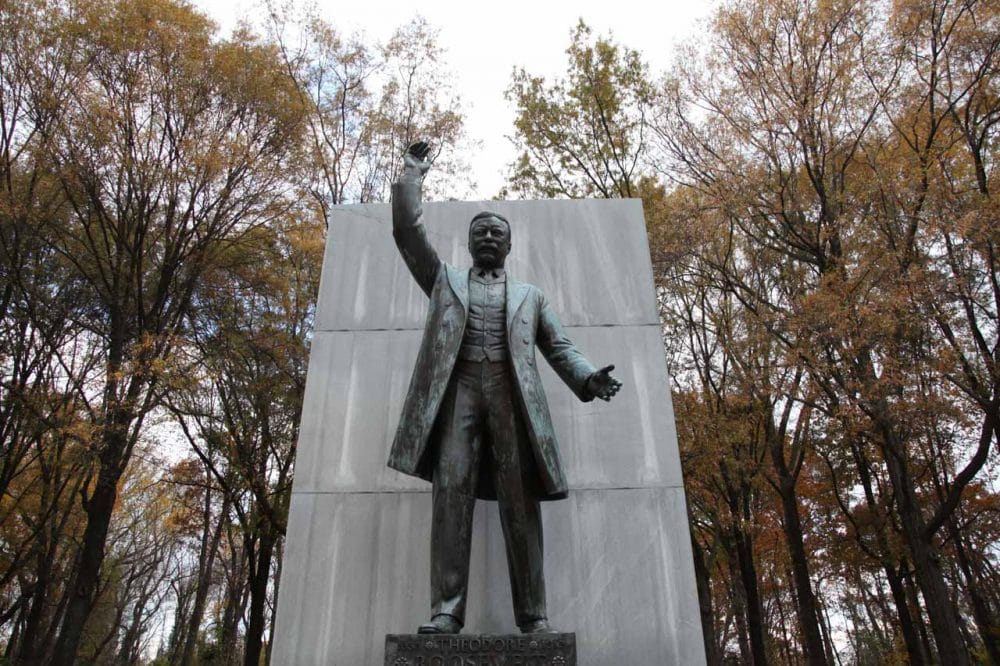
A wooded island in Washington, D.C.’s Potomac River, Theodore Roosevelt Island is a natural memorial to the 26th president, who was an avid outdoorsman and conservationist.
The island’s neglected farmlands were transformed into a natural forest in the 1930s by landscape architects, honoring Roosevelt’s legacy. Nowadays, it is a popular place to escape the urban bustle of D.C. and northern Virginia, an island park offering revitalizing hiking and boating opportunities.
More information: https://www.nps.gov/this/index.htm
Theodore Roosevelt National Park, North Dakota
- Theodore Roosevelt – 26th U.S. President, 1901-1909
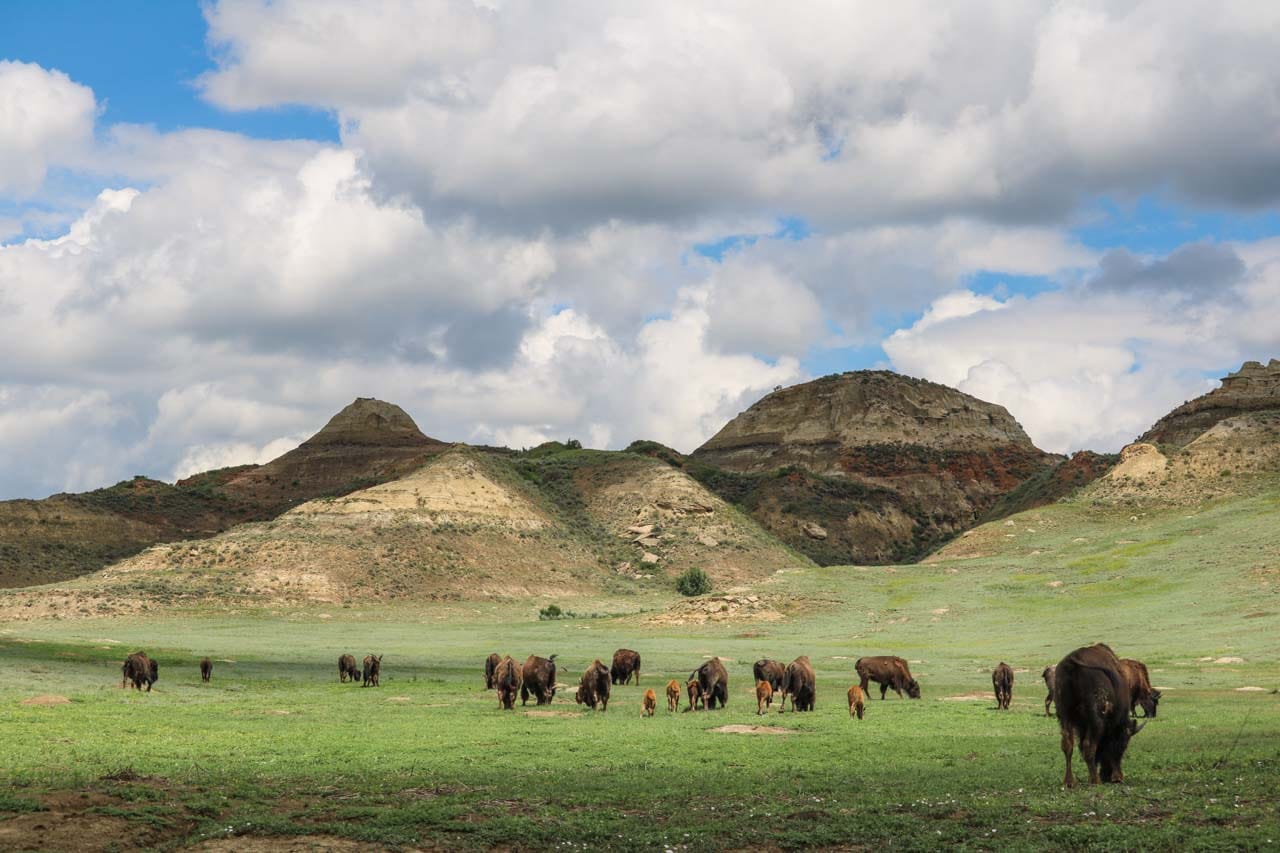
America’s only “proper” national park named after a president, Theodore Roosevelt National Park protects an area of badlands and historic sites in western North Dakota. At the meeting point of the Great Plains and the Badlands, this park is home to prairie dogs, elk and American bison.
It consists of three separate units—the North Unit, South Unit and Elkhorn Ranch Unit. The latter is the place where Roosevelt went to live for a while after the death of his wife and mother, who both died on the same day.
The South Unit near Medora is the park’s most popular unit, featuring a scenic loop drive, wonderful hiking trails, prairie dog towns and bison herds.
This was the very area where Roosevelt developed his lifelong passion for the outdoors, wildlife and nature conservation.
More information: https://www.nps.gov/thro/index.htm
William Howard Taft National Historic Site, Ohio
- William Howard Taft – 27th U.S. President, 1909-1913
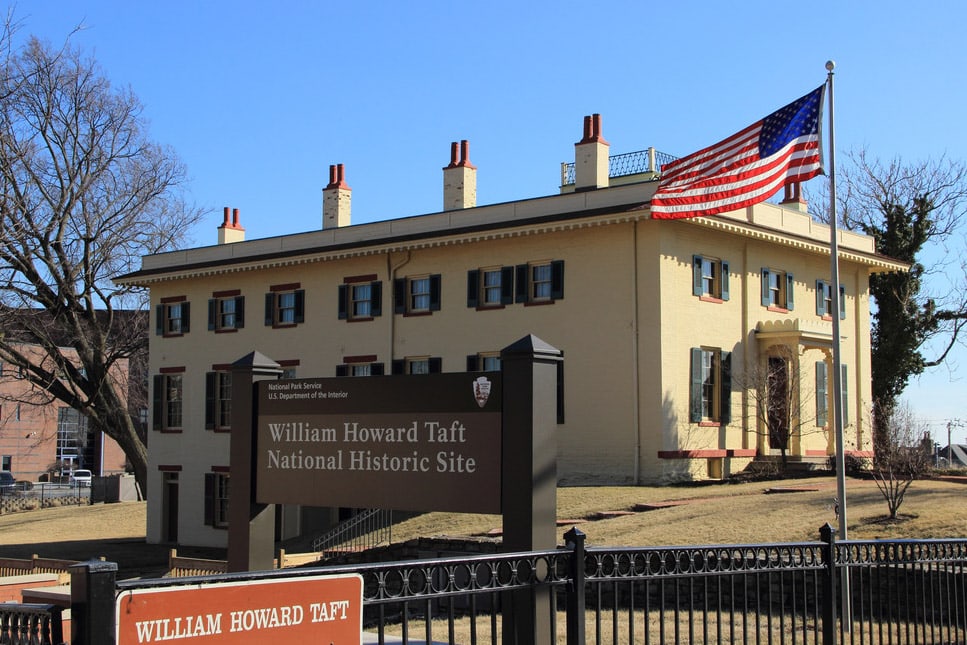
The two-story Greek Revival house in Cincinnati where William Howard Taft was born and grew up is now preserved as William Howard Taft National Historic Site. He lived in this house until he left for Yale University in 1874.
Highlighting the environment that influenced and molded Taft’s philosophy and character, this is arguably the best place in the United States to learn about the life and work of America’s 27th president and 10th Chief Justice. To date, he is still the only person to have served in both offices.
More information: https://www.nps.gov/wiho/index.htm
Herbert Hoover National Historic Site, Iowa
- Herbert Hoover – 31st U.S. President, 1929-1933
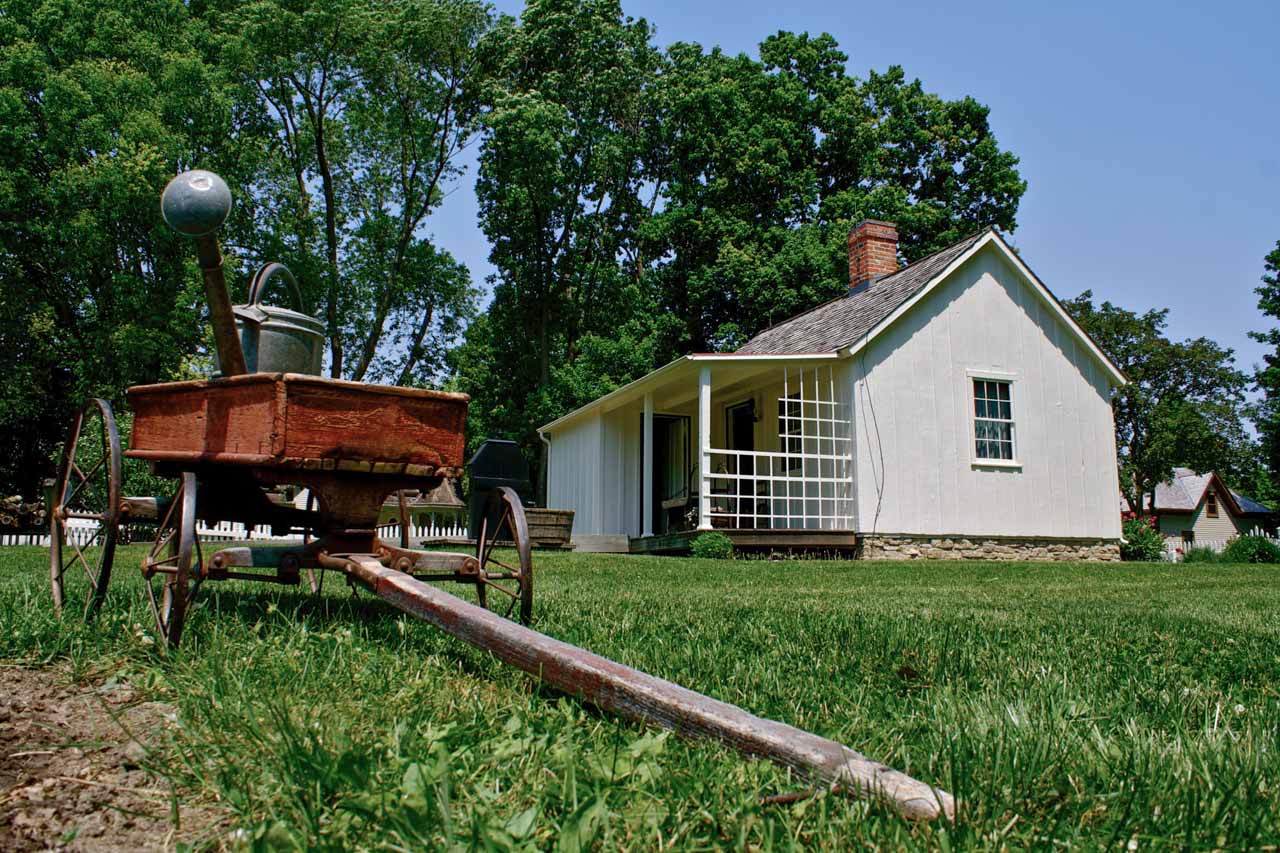
Preserving the birthplace and childhood home of America’s 31st president, the Herbert Hoover National Historic Site is in West Branch, Iowa.
Shortly after becoming an orphan when he was only nine years old, Hoover left West Branch to live with his uncle on a nearby farm and, two years later, moved to Oregon to live with another uncle.
Despite this difficult youth, Hoover became a successful mining engineer, accumulating enormous wealth by working on projects in China and Australia. His presidency, however, suffered from the impact of the Great Depression and he only served one term, before being defeated by Franklin D. Roosevelt.
At the Herbert Hoover National Historic Site, you can learn about Hoover’s legacy, as well as visit the Birthplace Cottage, the Gravesite, the Herbert Hoover Presidential Library & Museum and several other historic buildings.
More information: https://www.nps.gov/heho/index.htm
Home of Franklin D. Roosevelt National Historic Site, New York
- Franklin D. Roosevelt – 32nd U.S. President, 1933-1945
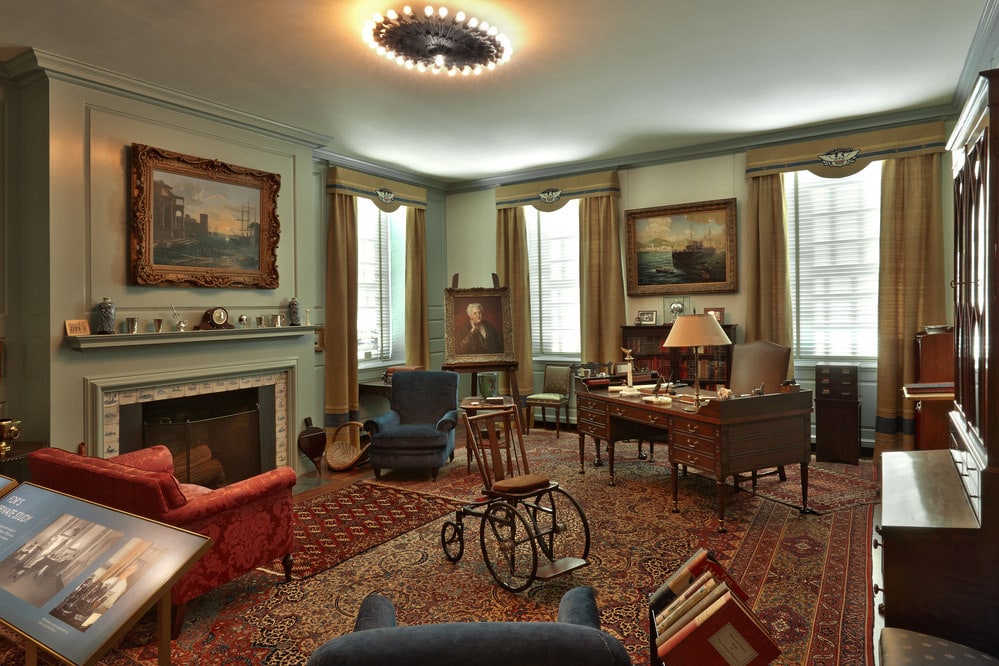
The Springwood estate in Hyde Park, New York was the birthplace, home and burial place of the longest-serving president in U.S. history.
Now preserved as the Home of Franklin D. Roosevelt National Historic Site, this sprawling estate consists of the homes of Franklin and Eleanor Roosevelt, the Roosevelt Presidential Library and more than 1,000 acres of trails and gardens.
Anyone who’d like to immerse themselves in the work, accomplishments, life and legacy of America’s only four-term president. Explore the park’s many historic buildings, trails and exhibits to learn about Roosevelt’s presidency, from the Great Depression to the New Deal and World War II.
More information: https://www.nps.gov/hofr/index.htm
Eleanor Roosevelt National Historic Site, New York
- Eleanor Roosevelt – First Lady, 1933-1945
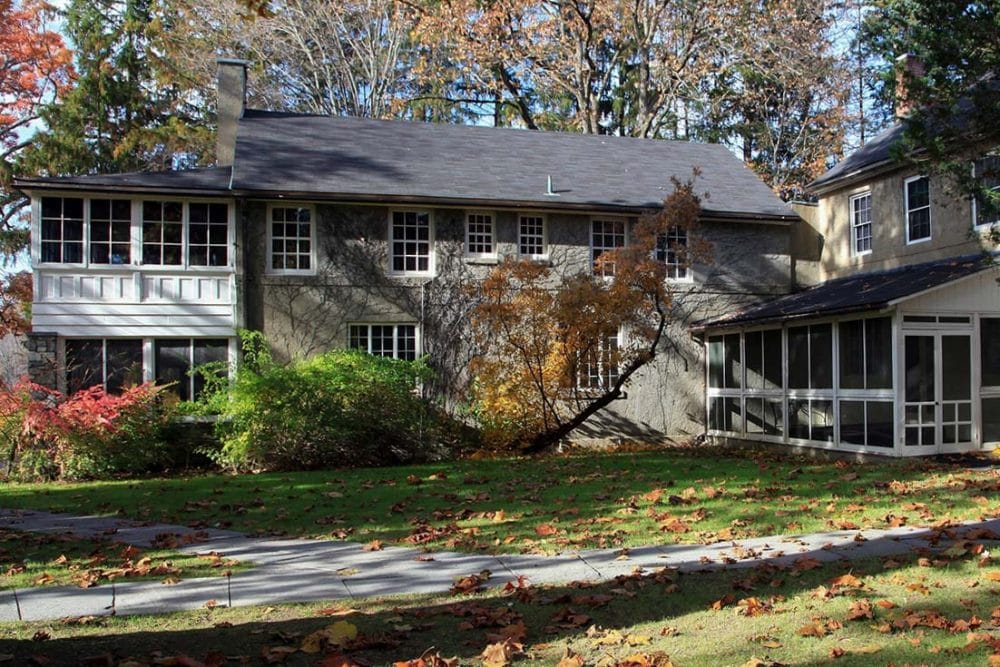
Serving as the First Lady of the United States during her husband’s four-term presidency, from 1933 to 1945, Eleanor Roosevelt is the longest-serving First Lady in U.S. history.
Just like the Home of Franklin D. Roosevelt National Historic Site, described above, the Eleanor Roosevelt National Historic Site is also located in Hyde Park, New York.
The former home of Eleanor Roosevelt, this is where Franklin and Eleanor entertained friends, the press, official state visitors and their associates. Originally part of the larger Roosevelt estate, this is now a separate NPS unit, which encompasses the buildings and peaceful scenery of what Eleanor called “Val-Kill”.
It is about two miles east of Springwood, the former home of Franklin D. Roosevelt, and an amazing place to learn about the everyday life and activities of one of America’s most beloved First Ladies.
More information: https://www.nps.gov/elro/index.htm
Harry S Truman National Historic Site, Missouri
- Harry S. Truman – 33rd U.S. President, 1945-1953
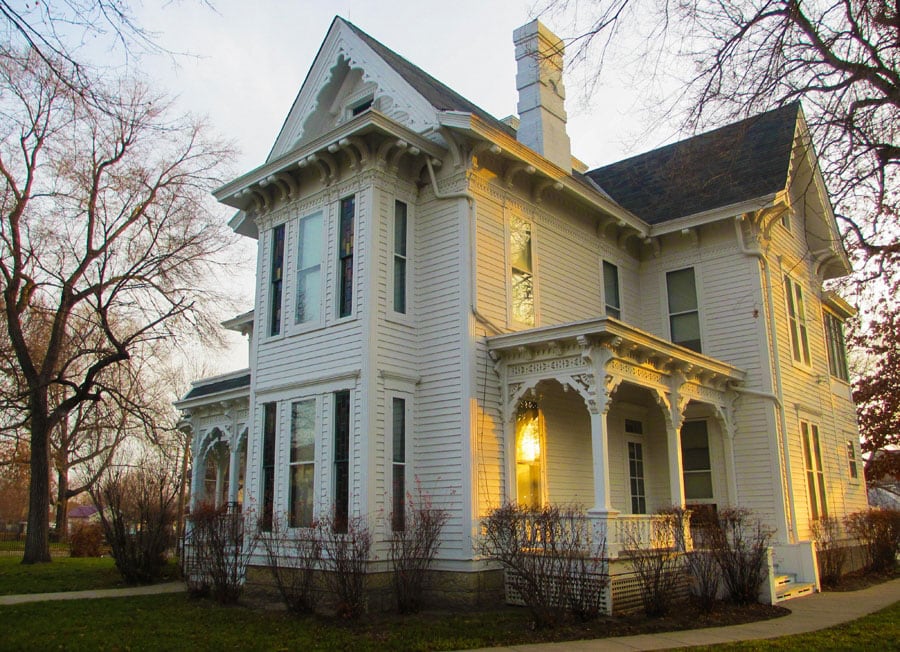
The 33rd president, Harry S. Truman was the person who initiated the transition of the United States from a traditionally isolationist country to the most powerful nation in the world.
The Harry S Truman National Historic Site (officially with the period after the S) preserves two important homes in the life of this influential president, the architect of the Marshall Plan.
The park consists of two separate units, both located within the Kansas City metropolitan area. The Truman Home in Independence, Missouri was the place where Truman lived from 1919 until his death in 1972. This beautiful white house served as the “Summer White House” during Truman’s two-term presidency.
The park’s second unit is the Truman Farm Home in Grandview, Missouri, where Truman worked as a young man. According to his mother, this is where “Harry got his common sense.”
More information: https://www.nps.gov/hstr/index.htm
Eisenhower National Historic Site, Pennsylvania
- Dwight D. Eisenhower – 34th U.S. President, 1953-1961
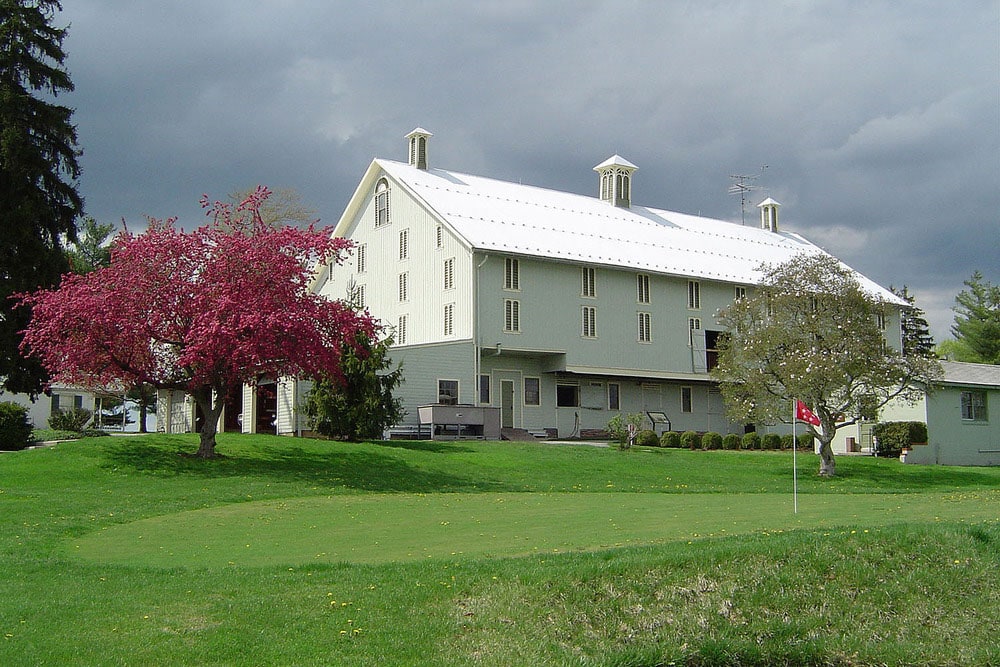
Situated adjacent to the Gettysburg Battlefield, the Eisenhower National Historic Site consists of the home and farm of Dwight D. (“Ike”) Eisenhower and his wife Mamie. Eisenhower purchased the land in 1950 when he was a General in the U.S. Army, a few years before he became president.
During his presidency, the Eisenhower farm served as a retreat from the White House, as well as a place where he met other world leaders.
A beautiful home in a peaceful setting, with a fine view of South Mountain and even a putting course, the Eisenhower National Historic Site offers an insight in the Eisenhower presidency and the Cold War issues of the time.
More information: https://www.nps.gov/eise/index.htm
John Fitzgerald Kennedy National Historic Site, Massachusetts
- John F. Kennedy – 35th U.S. President, 1961-1963
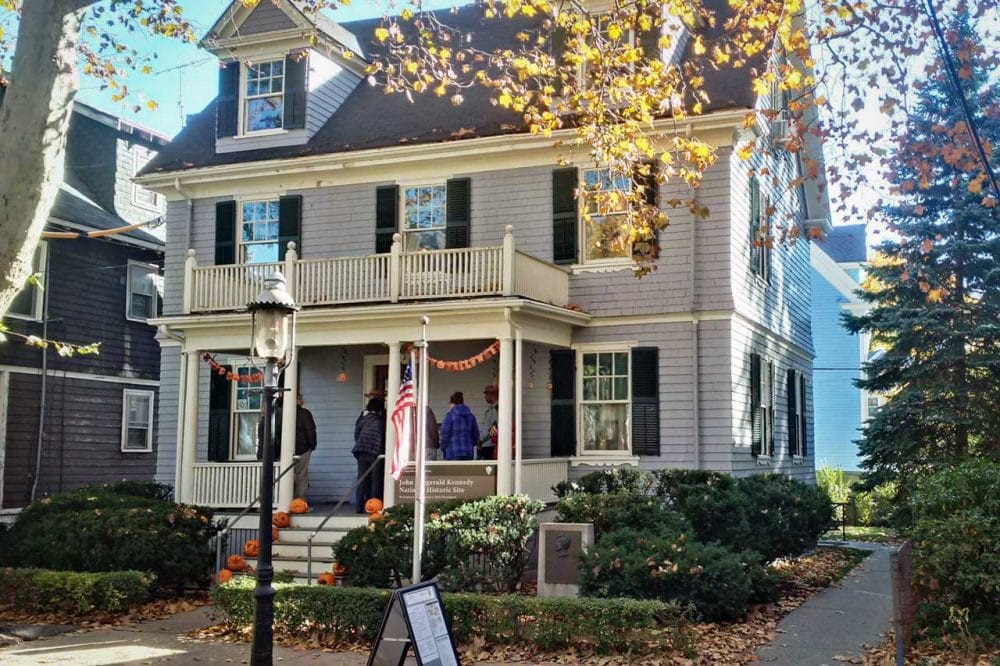
Located in Brookline, Massachusetts, the John Fitzgerald Kennedy National Historic Site preserves the birthplace and childhood home of John F. Kennedy, America’s 35th president. This is where JFK grew up and where he learned the values that inspired him to live a life of public service.
The Kennedy family donated this home to the National Park Service, the former president’s mother hoping that future generations of Americans and foreign visitors would “get a better appreciation of the history of this wonderful country.”
You can tour this beautiful house and see the room where JFK was born, see his favorite childhood books, learn how Mrs. Kennedy managed a large family and learn about the influences that shaped John F. Kennedy as a child.
More information: https://www.nps.gov/jofi/index.htm
Lyndon B. Johnson National Historical Park, Texas
- Lyndon B. Johnson – 36th U.S. President, 1963-1969
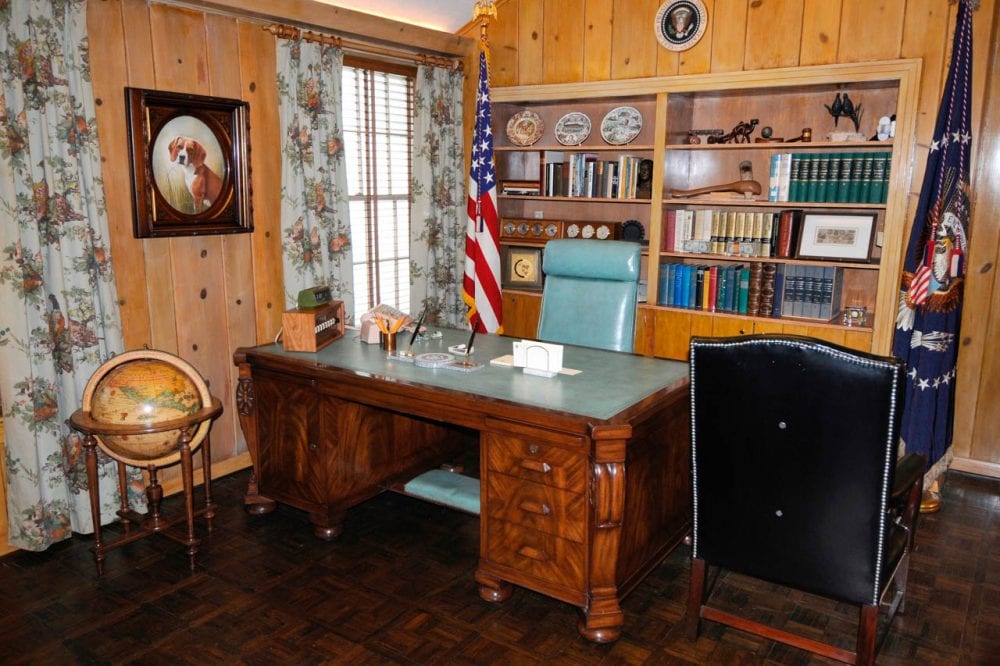
Of all these president national parks, this is the only one in Texas. The Lyndon B. Johnson National Historical Park is approximately 50 miles west of Austin (220 miles west of Houston) in central Texas and tells the life story of the 36th U.S. president.
At this fascinating National Park Service site, you can explore the birthplace, home, ranch and final resting place of Lyndon Baines Johnson. It also includes a cattle settlement established by Johnson’s grandfather and great-uncle.
Of all presidential national parks, this park offers arguably the most complete picture of the entire life of any American president.
Places to visit and explore include two visitor centers, the Johnson Settlement, the Boyhood Home and his beloved LBJ Ranch.
More information: https://www.nps.gov/lyjo/index.htm
Jimmy Carter National Historical Park, Georgia
- Jimmy Carter – 39th U.S. President, 1977-1981
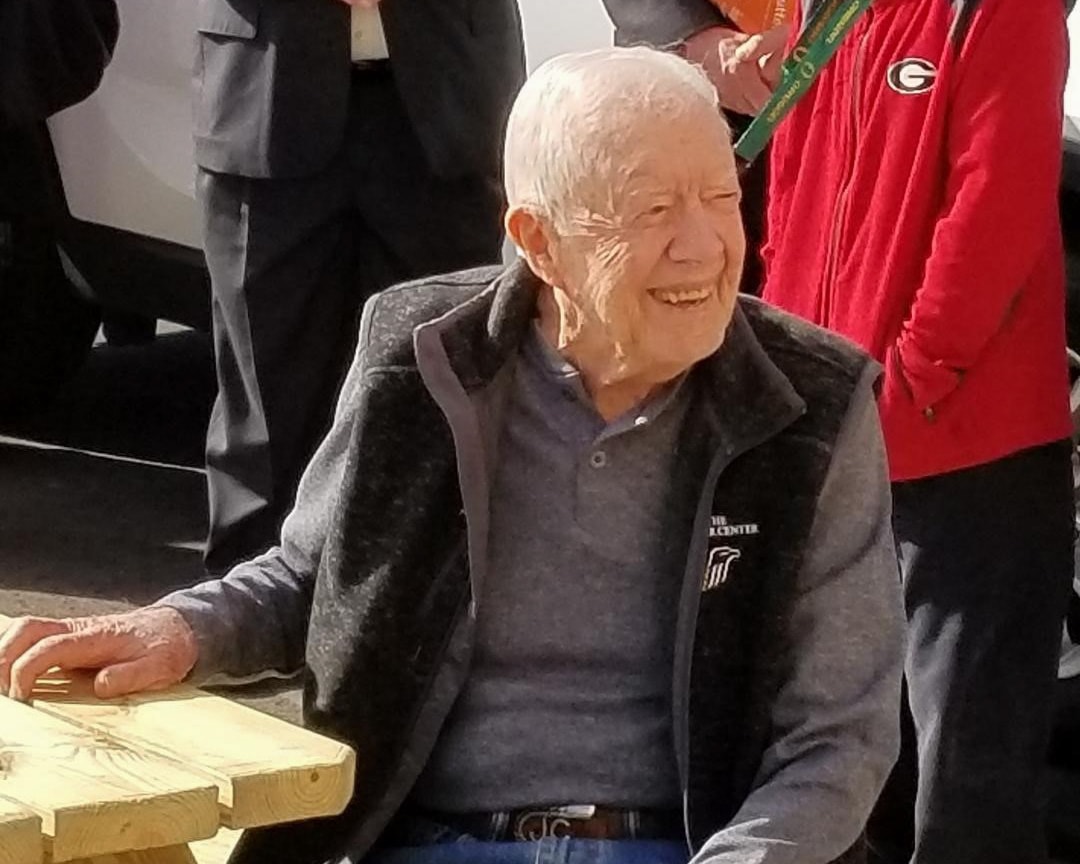
The Jimmy Carter National Historical Park in Plains, Georgia preserves a number of sites related to President James Earl “Jimmy” Carter.
It encompasses the Jimmy Carter Boyhood Farm, the Plains High School, the Plains Historic District and the Plains Train Depot, which was his 1976 campaign headquarters.
This fascinating and diverse NPS site provides a detailed look into the life of one of modern America’s most humble presidents—which is most likely due to his strong ties with the culture and rural community in which he grew up.
Note: Technically, the Carter Private Residence and Compound is also a part of the national historical park. However, since the Carter family still lives there, it is under Secret Service protection and not open to the public.
More information: https://www.nps.gov/jica/index.htm
President William Jefferson Clinton Birthplace Home National Historic Site, Arkansas
- Bill Clinton – 42nd U.S. President, 1993-2001
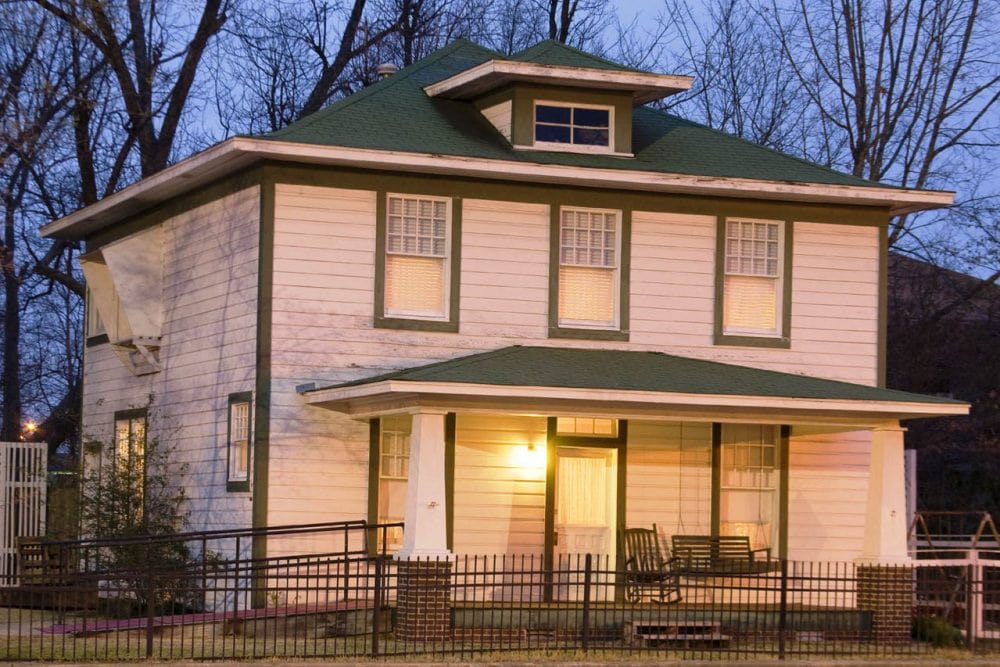
The elaborate name of this presidential park tells you exactly what it’s about. Located in the small town of Hope in the rural southwestern corner of Arkansas, this NPS site preserves the birthplace home of William Jefferson “Bill” Clinton, the 42nd president.
The visitor center has exhibits about important moments in Clinton’s life, while visitors can explore the home itself on guided ranger tours. Related sites in Hope include the Hope Visitor Center & Museum and the Rose Hill Cemetery, the final resting place of Clinton’s parents and maternal grandparents.
More information: https://www.nps.gov/wicl/index.htm
President’s Park (The White House), Washington, D.C.
- Every U.S. president since John Adams – 1800-present
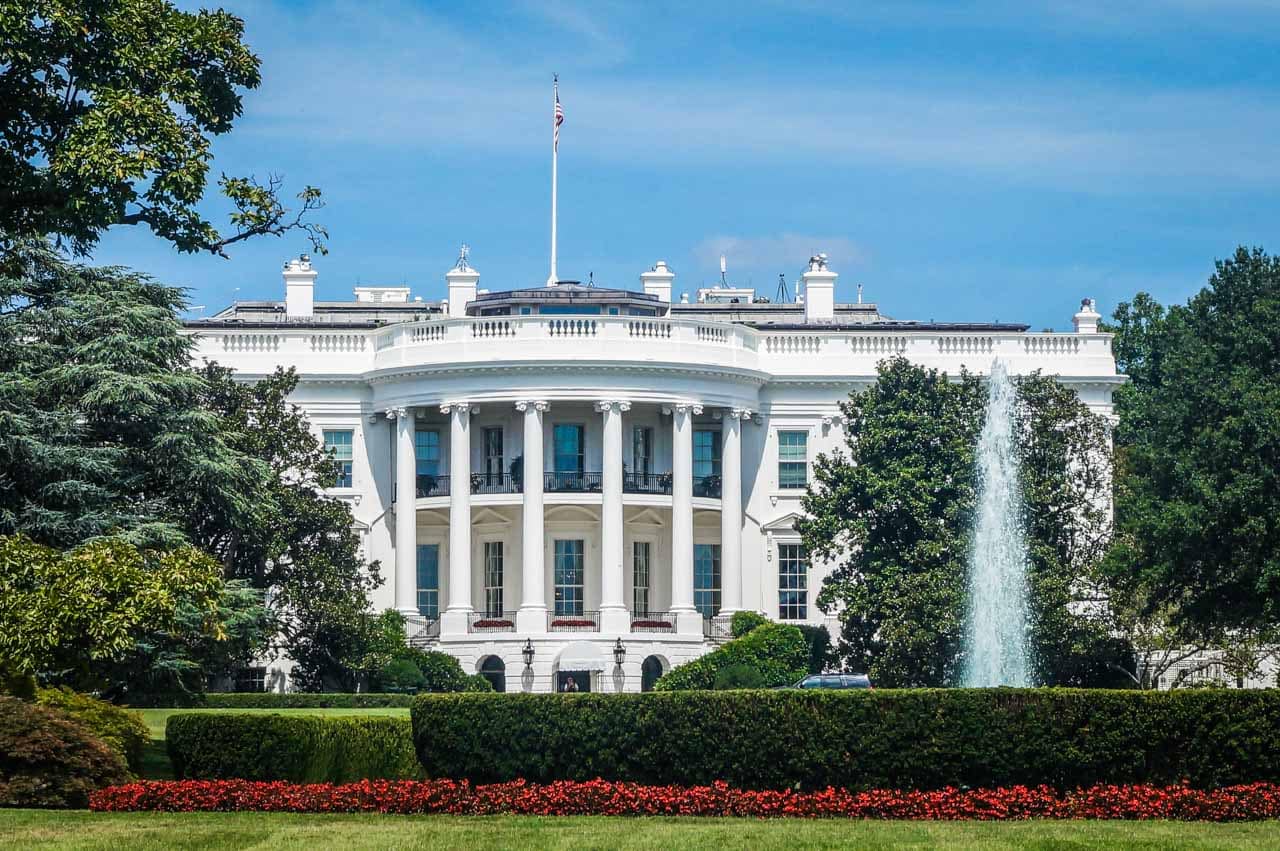
Last but absolutely not least, the White House is a National Park Service site, too!
Arguably the most famous house in the United States, it is part of President’s Park, an 82-acre park that also encompasses Lafayette Square, the Ellipse and the White House Visitor Center.
The White House has been the home and office of every U.S. President and First Lady since John and Abigail Adams in 1800. It is located on the National Mall in Washington, D.C., near many other presidential national parks featured in this list.
You can explore President’s Park on the Northern and Southern Trails, both of which offer views of the White House.
More information: https://www.nps.gov/whho/index.htm
